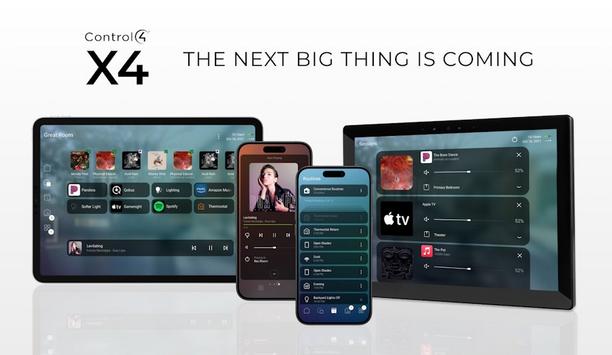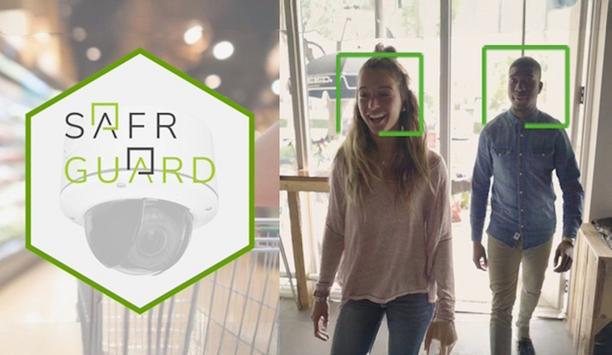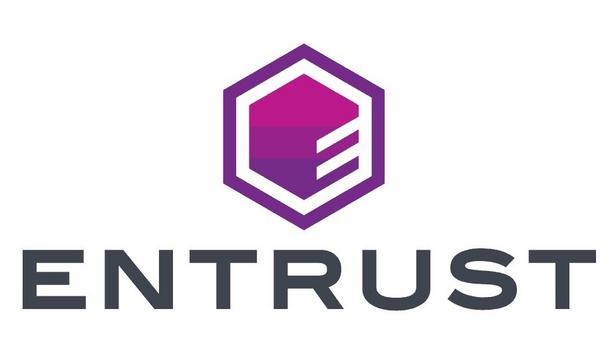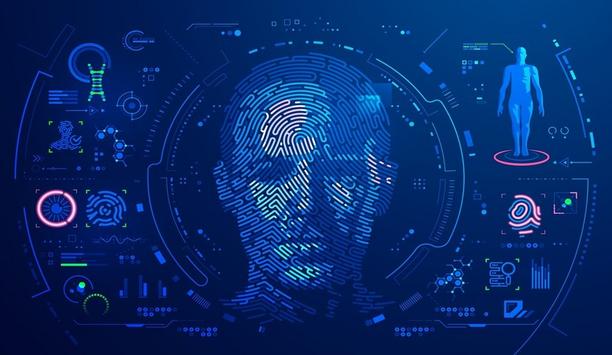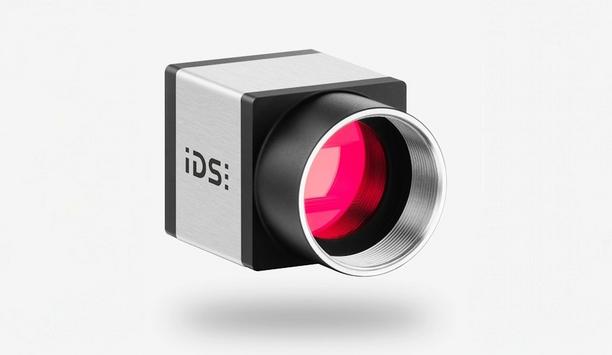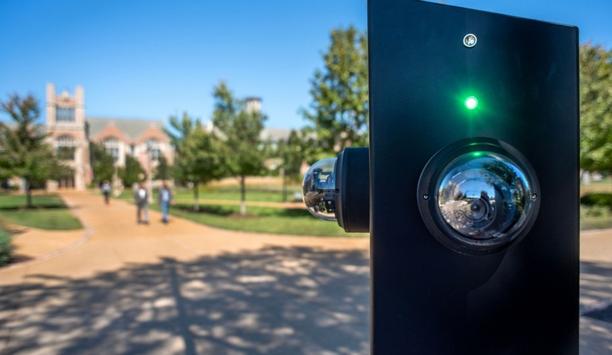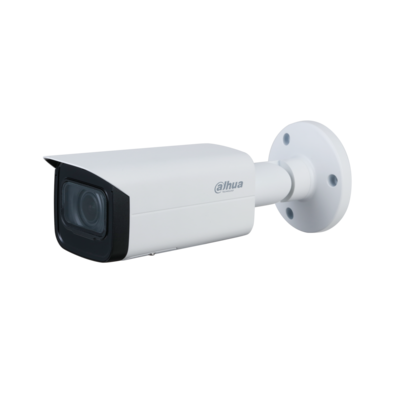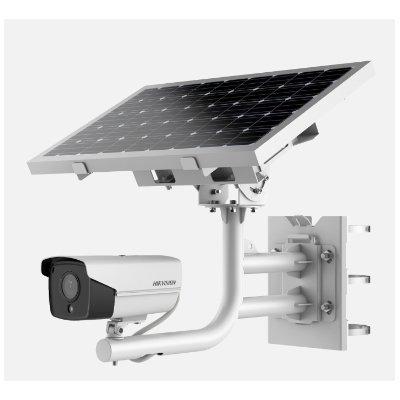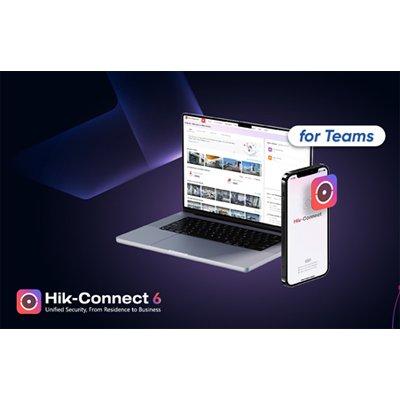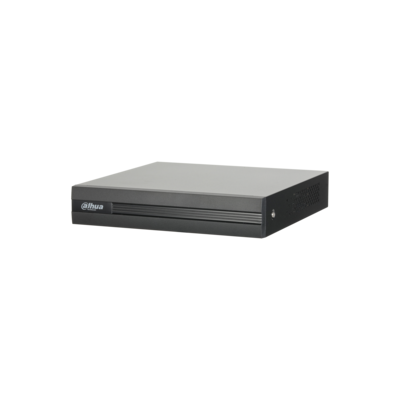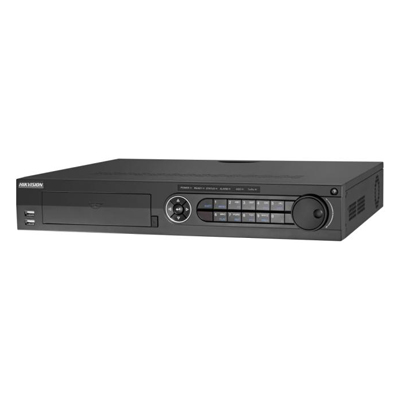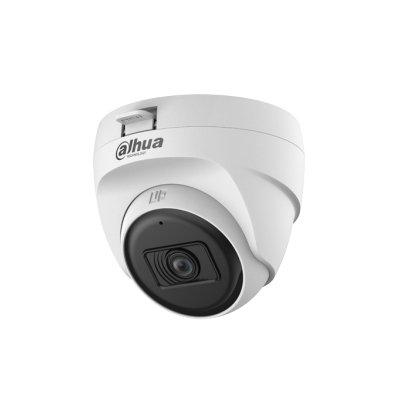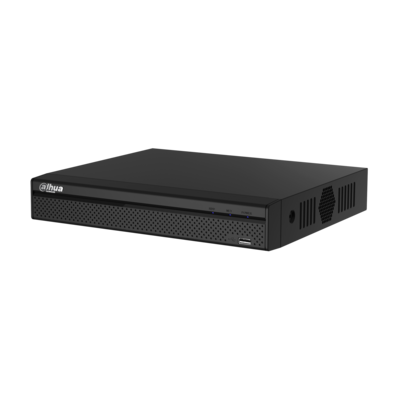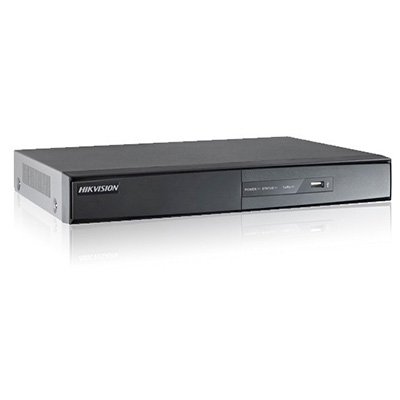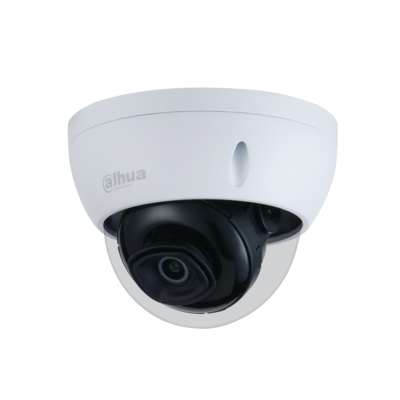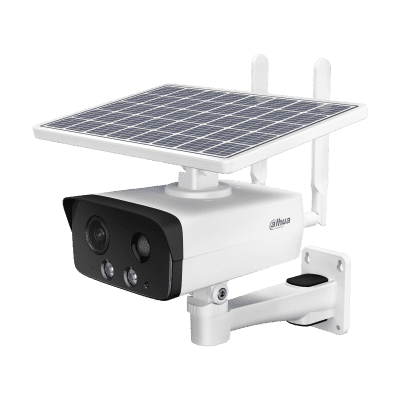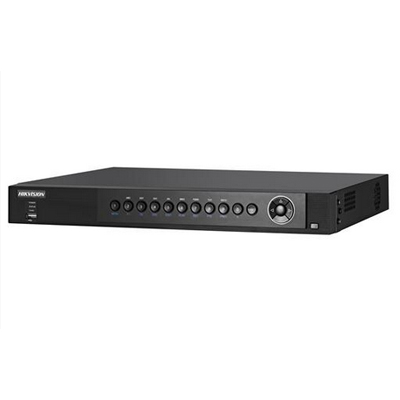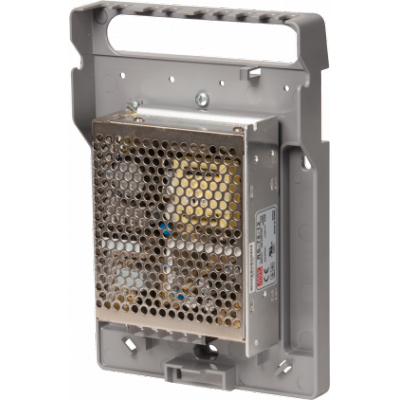Security camera systems
The role of audio in physical security is multifaceted and increasingly vital, offering a layer of intelligence and interaction that access control and/or video surveillance alone cannot provide. Sounds provide crucial context to visual events. For instance, someone running might appear suspicious on video, but audio could reveal they are shouting for help, changing the interpretation entirely. Even so, historically speaking, audio has been an underused component in physical security. How is the...
Artificial Intelligence isn’t just a buzzword anymore. It has become part of our lives, and its uses and applications are growing every other day. Even the public sector, which usually is a late adopter of new technologies, has come onboard this new train. Law enforcement, in particular, has seen the advantages different AI technologies can offer to their work and has started to integrate them into their workflow and daily routines. But there is much more to come. Task automation: AI as...
Hanwha Vision, the global vision solution provider, has added AI capabilities to its compact range of mobile cameras. The range, including models TNV-C8014RM and TNV-C8034RM, showcases powerful AI analytics, alongside colour detection of clothing and vehicles, and dynamic privacy masking. At only 55mm in height, the solution is discreet and well suited to spaces with low ceilings, such as buses and trains. Dynamic Privacy Masking Dynamic Privacy Masking is a standout feature of the AI mobil...
In a world of nonstop cyberattacks, Rubrik announced its newest upcoming solution, Identity Resilience, designed to secure the entire identity landscape alongside data. Identity Resilience aims to protect the most common entry points for attackers – human and non-human identities (NHIs) – to help organisations maintain operations with minimal downtime. Rubrik’s solution Rubrik’s solution is designed to secure this weak infrastructure that powers virtually Identi...
Deep Sentinel, a pioneer in proactive AI-powered security, has announced the launch of their Gen V Hub. The new product delivers stronger, faster and more affordable security by supporting up to 20 cameras for commercial deployments. Intended users include businesses that use multiple cameras for on-premise security, including multifamily residences, businesses prone to break-ins, auto dealerships and hotel properties. Gen V Hub updates The Gen V has a smaller, sleeker design for easy install...
The Security Industry Association has sent a letter to U.S. Trade Representative - Jamieson Greer and U.S. Secretary of Commerce - Howard Lutnick requesting relief from tariffs for security industry products and asking that the Trump administration formulate a process that allows companies to apply for product-specific exemptions. Security industry – key segment of the U.S. economy The security industry is an important segment of the U.S. economy, contributing over $430 billion The secu...
News
As organisations navigate an increasingly complex threat landscape, security pioneers are making strategic shifts toward unified platforms and emerging technologies, according to the newly released 2025 State of Security and Identity Report from HID. The comprehensive study gathered responses from 1,800 partners, end users, and security and IT personnel worldwide, and reveals a significant transformation in how businesses are approaching security, with mobile credentials and artificial intelligence emerging as key drivers of innovation. Integration of modern technology "The security industry is at a pivotal moment where the integration of modern technology with existing infrastructure is no longer optional—it's imperative," said Ramesh Songukrishnasamy, Sr. VP of Engineering at HID. "The fact that 73% of security pioneers now prioritise software-driven unified solutions shows we've moved beyond traditional siloed approaches. Organisations are demanding platforms that can scale with their needs while providing actionable intelligence." Key findings from the report A marked increase in mobile credentials and biometrics adoption, signalling a shift away from traditional access methods The rapid rise of mobile credentials, with 61% of security pioneers identifying their proliferation as a top trend, signals a significant shift away from traditional access methods. Nearly two-thirds are either deploying or planning to deploy mobile solutions. Concurrently, demand for biometric technologies such as fingerprint, iris, and facial recognition is on the rise: about 35% of respondents currently use biometric technology, while 13% plan to, indicating significant growth potential in this segment. Growing demand for unified security management solutions that streamline operations As organisations diversify security technology now, many security pioneers (67%) are making moves to adopt software-driven security solutions, citing that unifying multiple data collection methodologies would be “somewhat” or “very important” (73%) to their organisation. Strong preference for open platforms that facilitate seamless integration Interoperability has become synonymous with progress across the security industry over the last few years, and the trend continues as more than half of security professionals reported open solutions as being “extremely” or “very” important to their organisations. Strategic focus on converging platform solutions rather than standalone products Nearly two thirds of organisations and 73% of integrators and consultants report a shift toward software-driven security solutions that bridge physical and digital functions like video surveillance, access control, and intrusion detection into a more unified platform. Significant channel transformation driven by digital innovation The security channel is undergoing significant transformation driven by digital innovation. While 77% of channel partners believe they are adapting well to these changes, growing end-user demand for AI, cloud solutions, IoT integration, and advanced analytics is reshaping service expectations. To thrive, the channel must continuously evolve and adapt to meet the evolving needs of the market and keep pace with digital transformation within the security sector. Accelerated adoption of AI agents to enhance security operations AI agents are being rapidly adopted to enhance security operations. Use cases are proliferating across access control, identity management, video, and security management platforms. Key benefits cited include improved efficiency and speed of security processes (50%) and enhanced real-time data analysis capabilities (47%). Continued emphasis on sustainability in security decision-making, budget allowing Sustainability is still a key factor in security decision-making, with 75% of security pioneers now factoring it into their solution selection process. However, sustainability is not the most critical factor when selecting new solutions as security and cost-effectiveness are still the highest priority for 80% of integrators and consultants.
LOOKOUT, a pioneering provider of marine AI systems for safety, announced the expansion of its product line by introducing a new camera featuring an integrated navigation light. This new camera system offers enhanced safety and greater installation flexibility and is available in LOOKOUT's classic blue and white, matte black with carbon accents and custom colours by request, to complement a wider range of vessel designs. Advanced AI vision cameras LOOKOUT has solved a common installation dilemma for boat owners with its innovative new system that integrates its advanced AI vision cameras with a Coast Guard-certified all-around white navigation/anchor light from innovative partner and trusted marine lighting veteran Lumitec. This first-of-its-kind solution addresses the competing need for both technologies to be mounted at the vessel's highest point, eliminating installation conflicts while enhancing safety capabilities. LOOKOUT camera’s detection range LOOKOUT camera’s detection range depends on its height, making it ideal to mount at the highest point of a vessel The LOOKOUT camera is an AI-optimised three-camera system featuring infrared night vision, high-resolution daylight zoom, and 360-degree views for docking. It automatically identifies and tracks buoys, debris, logs, other vessels, whales, and many more potential hazards on the water. The LOOKOUT camera’s detection range depends on its height, making it ideal to mount at the highest point of a vessel. As most navigators know, U.S. Coast Guard regulations stipulate navigation lights should also be mounted at the boat's highest point. LOOKOUT 360-degree nav light To eliminate any potential blind spots caused by overlapping mounts and the increased cost of installing two elevated mounts, LOOKOUT has integrated a white 360-degree nav light into its camera enclosure to replace existing nav lights. The all-around white light is visible up to two nautical miles, as required by regulations, and is enclosed in a ruggedised housing to endure the harshest marine conditions. Reduce installation costs LOOKOUT has integrated a white 360-degree nav light into its camera enclosure to replace existing nav lights “We are continuously evolving our products to suit various applications and vessel types,” said David Rose, CEO of LOOKOUT. “To reduce installation costs and combine technologies meant for the highest point on a vessel, we have integrated an all-around white light into the LOOKOUT camera." "This affordable and innovative solution provides safety benefits without installation hassles. We believe our customers will appreciate the look and performance of this new product.” Advanced computer vision algorithms “Boston Harbour presents significant navigational challenges with its ferry traffic, commercial vessels, and recreational boaters all sharing congested waterways,” said Paul Sullivan of Powertime Boat Club in Boston, who has been testing the system. “The LOOKOUT system has already identified several potential collision situations that might have been missed without its AI assistance. The integrated navigation light is a brilliant innovation—it simplifies our installation process while ensuring we remain compliant with Coast Guard regulations. It's like having an extra crew member whose only job is to watch for dangers.” Built by a team of pioneering AI researchers, video game developers, 3D designers, and hardware engineers, the LOOKOUT camera system uses advanced computer vision algorithms to detect and track hazards in the marine environment.
ADI | Snap One is demonstrating its expansive portfolio at ISC West 2025 from April 2 – 4, at The Venetian Expo in Las Vegas, Nevada, USA. In Booth #12043, visitors can explore an assortment of technologies and solutions across multiple product categories, including security, video surveillance, automation, power, networking, remote management, data communications, fire and life safety, smart living, and more. ADI | Snap One exhibits at ISC West 2025 “As a combined business, we're focused on expanding our portfolio, enhancing our distribution capabilities, and accelerating our product innovation to ensure we meet the diverse needs of our customers,” said Marco Cardazzi, Senior Vice President (SVP), & Chief Marketing Officer, ADI Global Distribution. He adds, “At ISC West, we're excited to showcase our broad selection of products, including both our top-tier distributed brands and our own exclusive brands. This combination allows us to offer a comprehensive range of solutions, giving customers a variety of options that empower them to succeed.” ADI | Snap One’s 2025 product roadmap Attendees can get a first-hand look at ADI | Snap One’s 2025 product roadmap Attendees can get a first-hand look at ADI | Snap One’s 2025 product roadmap that includes a host of new innovations tailored to the evolving needs of security and integration professionals. Some of the technologies on display include: Control4 X4 ADI | Snap One is showcasing a significant milestone in customised control and automation – Control4 X4. This next generation of the Control4 experience for users will offer a refined interface that is designed to deliver enhanced personalisation of security and automation settings, richer engagement, and intuitive navigation, benefiting both end-users and integrators alike. Control4 X4 delivers a way to manage a smart home ecosystem with a streamlined Home Screen, curated and customisable Routines, and Widgets for quick access to key functions — whether across the entire home or in a single room. OvrC Pro Attendees can explore how the integration of the OvrC Pro remote monitoring platform with Control4 CORE and CA Controllers enhances system visibility and management within a complete Control4 ecosystem. This includes Luma X20 Series surveillance cameras, WattBox 820 Series power distribution units, and Access Networks Wi-Fi components — all of which feature native OvrC integration for seamless remote monitoring and control. Luma Surveillance ADI | Snap One evolves its Luma camera line to meet the growing security needs As surveillance technology continues to advance, ADI | Snap One evolves its Luma camera line to meet the growing security needs of both residential and commercial environments. The recent introduction of the new line of Luma 4K Hybrid cameras and the X20 Fisheye Camera delivers enhanced performance with versatile designs. The Hybrid 4K camera features Active Deterrence, which utilises built-in LED lights, a microphone, and a speaker to enhance security. These added security measures are powered by the camera’s advanced AI technology, allowing it to distinguish between people and vehicles and capture crucial, defining details like vehicle colour, and more. Araknis and Access Networks with OvrC Integration ADI | Snap One will showcase how the successful integration of OvrC remote monitoring with advanced Wi-Fi networking solutions from Araknis and Access Networks enhances efficiency for systems integrators while delivering a superior connectivity experience for customers. With OvrC, integrators can remotely configure, monitor, and manage home and business networks via the cloud, streamlining deployment and ongoing support. Outdoor Audio Surroundscape series is designed to deliver greater durability, scalability, and simpler installation Building on the legacy of Episode’s landscape speaker offering, Surroundscape series is designed to deliver greater durability, scalability, and simpler installation for outdoor environments. Episode Radiance, which combines audio and lighting on a single wire to create beautiful ambience for outdoor projects, will be on display, as well as Episode Extreme, a weatherproof indoor and outdoor speaker designed to withstand the toughest conditions. Mission 500 Security 5K/2K Run Additional distributed product brands on display in the booth will include Resideo, Honeywell Fire, Napco, Axis Communications, Pelco, HID, Yale, ProdataKey, eero, and more. In addition to activities on the show floor, ADI | Snap One is participating in the Mission 500 Security 5K/2K Run on Thursday April 3, helping to raise funds for children in need across the country.
SAFR, a pioneer in AI-powered security solutions, announced the launch of SAFR® Guard, a powerful new product purpose-built for the Retail Loss Prevention and Asset Protection market. Designed to prevent shoplifting and retail crime before it happens, SAFR Guard makes shopping better and safer for both customers and employees. SAFR Guard delivers unmatched accuracy, speed, and simplicity while also respecting consumer privacy. SAFR’s proven AI platform SAFR Guard brings powerful AI-based facial matching technology to the edge—no bulky servers SAFR Guard brings powerful AI-based facial matching technology to the edge—no bulky servers, no processing delays, no footprint – just real-time alerts from the moment a known security concern walks through the door. Built on SAFR’s proven AI computer vision platform, it’s a highly accurate, turnkey solution that can be rapidly deployed, scaling effortlessly from a single location to an entire national chain. SAFR Guard next evolution "SAFR Guard represents the next evolution in proactive loss prevention," said Charisse Jacques, President of SAFR. “Retailers are under pressure to combat organized retail crime without adding complexity to their operations. With SAFR Guard, we’re providing a smarter, faster way to secure stores, protect employees and enhance the customer experience – delivering both immediate impact and long-term value.” SAFR Guard LP & AP experts SAFR Guard empowers store operators and LP/AP teams to identify repeat offenders Developed in close collaboration with retail loss prevention (LP) & asset protection (AP) experts, SAFR Guard empowers store operators and LP/AP teams to identify repeat offenders and known threats the moment they walk in, enabling early intervention and safer store environments. It combines industry-pioneering facial recognition technology with instantaneous edge-processing, allowing stores to go from setup to threat detection in minutes. SAFR Guard real-time alerting "As someone who’s spent decades in this industry, I can confidently say SAFR Guard is unlike anything we've seen before," said Chris Ochs, Director of Product Management at SAFR. “This isn’t just a technology upgrade or another camera system—it’s a true force multiplier for LP teams. From setup to real-time alerting, it’s designed to be fast, simple, and incredibly effective. And with a workflow that virtually eliminates false positives, LP professionals can act on alerts with confidence—knowing they are authentic and actionable.” SAFR’s commitment to responsible innovation SAFR Guard also reflects SAFR’s commitment to responsible innovation SAFR Guard also reflects SAFR’s commitment to responsible innovation. Built with privacy in mind, it includes robust data management tools and policies that protect sensitive information, comply with all relevant policies and regulations, and uphold the trust of the public. By ensuring that safety and privacy go hand in hand, SAFR is setting a new standard for responsible tech. SAFR Guard in action Steered by the Guiding Principles, SAFR is committed to protecting privacy and deploying solutions that respect the dignity and equal worth of every person. Don’t miss the chance to see SAFR Guard in action. Visit SAFR at Booth #811 at the RILA Asset Protection Conference April 27-30 and discover how cutting-edge AI Computer Vision is changing the game for retail loss prevention – providing peace of mind that they are staying ahead of evolving threats.
A new report jointly issued by the Rutgers University Miller Center on Policing and Community Resilience, the Global Consortium of Law Enforcement Training Executives (GCLETE), and the Life Safety Alliance (LSA) addresses rising concerns from civil liberties groups over the use of drones by law enforcement. The comprehensive white paper presents evidence that unmanned aerial systems (UAS)—commonly referred to as drones—are saving lives, improving officer safety, and increasing police efficiency at a time when departments nationwide face severe staffing shortages. Severe staffing shortages However, the report’s authors conclude that such fears are largely speculative or anecdotal The report responds directly to recent claims by organizations such as the American Civil Liberties Union (ACLU), which has warned that police drone programs may usher in an era of mass aerial surveillance. However, the report’s authors conclude that such fears are largely speculative or anecdotal. “Civil liberties are a precious cornerstone of democratic societies,” said Michael Gips, co-author and President of the Life Safety Alliance. “We need to respect and preserve them. But our analysis shows that drones are being used responsibly and transparently, with policies and oversight already in place in many jurisdictions.” Law enforcement drone The 32-page report: Cites dozens of examples of drones aiding search-and-rescue, criminal apprehension, and public safety. Highlights a 150% increase in law enforcement drone use since 2018, driven by proven effectiveness. Details model policies, such as the “Five Cs” framework by DRONERESPONDERS, which emphasize privacy, transparency, accountability, and community engagement. Explores case law demonstrating that the U.S. legal system effectively balances competing interests in law enforcement drone use. Presents a sample department policy ensuring strict compliance with FAA regulations, data retention rules, and privacy safeguards. Documents the most significant relevant literature on law enforcement drone use. Outweigh theoretical risks Paul Goldenberg, Chief Advisor to the Miller Center and former DHS Senior Advisor, added: “Now is the time to inform—not inflame—the public about how drones can serve communities while upholding civil rights. This report does just that.” The authors argue against halting Drone as First Responder (DFR) programs, as recommended by the ACLU, stating that the benefits of drone deployment far outweigh theoretical risks. In fact, the report cites hundreds of successful missions, including the rescue of missing persons, apprehension of violent offenders, and disaster response. “Let’s not use fear to undermine a tool that protects our communities,” said Dr. David Grantham, national security expert and co-author. “We need thoughtful policy, not paralysis.”
Entrust, the pioneer in identity-centric security solutions, announced the Entrust Cryptographic Security Platform, the industry’s first unified, end-to-end cryptographic security management solution for keys, secrets, and certificates. Cyberattacks on data security and identity systems are exploding in scale and sophistication. Securing data and identities Traditional approaches to securing data and identities aren't working, and in digital-first environments, every connected device, application, and system is at risk without a secure cryptographic foundation. And the fragmented tools for managing cryptographic sprawl – including encryption keys, secrets, and certificates – have made it nearly impossible to confidently manage cryptography at an enterprise scale. Deployment of cryptographic solutions Security, IT, and DevOps require the control and agility they need to simplify the deployment of solutions The Entrust Cryptographic Security Platform addresses this challenge by providing comprehensive visibility and manageability across the entire cryptographic estate, including public and private cloud environments, endpoints, applications, and networks. Security, IT, and DevOps now can have both the control and agility they need to simplify deployment of cryptographic solutions and the centralised inventory and visibility to manage increasingly complex operations and to prepare for the shift to post-quantum cryptography. Aspects of cryptographic security For the first time, security pioneers, IT, and development organisations have a unified platform from which to manage all aspects of cryptographic security. The Entrust Cryptographic Security Platform integrates market pioneering capabilities to deliver unified compliance management, PKI deployment and operation, lifecycle management for keys, secrets, and certificates, secured with Entrust nShield and third-party hardware security modules (HSMs), and interoperable with top security, identity, and IT management systems through extensive integrations, providing for unmatched protection. Foundation of data and identity security Entrust Cryptographic Security Platform integrates market-pioneering abilities to deliver management "Siloed cybersecurity tools are no longer enough in a world where keys, secrets, and certificates are increasingly being targeted by AI-enhanced attacks. We’re seeing an explosion of data and devices that need to be secured by cryptography, and we’re in the midst of a multi-year transition to quantum-secure cryptography." "It’s clear that every organisation must place a heightened focus on cryptographic estate management as the foundation of data and identity security,” said Bhagwat Swaroop, President of Digital Security at Entrust. “With our new Cryptographic Security Platform, Entrust and our partners are helping organisations protect their cryptographic foundations.” Cryptographic estate monitoring and observability "With the inevitable ‘Q-day’ getting closer and closer—when quantum computers can quickly break traditional encryption -- cryptographic management needs to keep pace. Businesses need to have complete cryptographic estate monitoring and observability while also maintaining flexibility to ensure they're keeping pace with the technology landscape," said Jennifer Glenn, IDC Research Director for Information and Data Security. "Organisations are seeking a comprehensive, long-term solution that will adapt to the future of security." Entrust Cryptographic Security Platform The Entrust Cryptographic Security Platform lets customers take control and mitigate the potential for disruption in these vast and complex transitions, providing: Enterprise-Wide Visibility: monitor cryptographic assets, audit changes, and receive alerts for enhanced security oversight, all from a centralised dashboard. Cryptographic Risk Management: automatically assess cryptographic risk posture, enforce policy, and secure keys, secrets, and certificates across distributed functions, divisions, and teams. Scalable Architecture: deploy high-performance, future-proof cryptographic solutions supporting the latest standards, with on-prem and managed service options. Interoperable: enable extensive integrations with top security, identity, and IT management systems while enabling customisation through open APIs. The Entrust Cryptographic Security Platform will be available in May 2025.
As organisations navigate an increasingly complex threat landscape, security pioneers are making strategic shifts toward unified platforms and emerging technologies, according to the newly released 2025 State of Security and Identity Report from HID. The comprehensive study gathered responses from 1,800 partners, end users, and security and IT personnel worldwide, and reveals a significant transformation in how businesses are approaching security, with mobile credentials and artificial intelligence emerging as key drivers of innovation. Integration of modern technology "The security industry is at a pivotal moment where the integration of modern technology with existing infrastructure is no longer optional—it's imperative," said Ramesh Songukrishnasamy, Sr. VP of Engineering at HID. "The fact that 73% of security pioneers now prioritise software-driven unified solutions shows we've moved beyond traditional siloed approaches. Organisations are demanding platforms that can scale with their needs while providing actionable intelligence." Key findings from the report A marked increase in mobile credentials and biometrics adoption, signalling a shift away from traditional access methods The rapid rise of mobile credentials, with 61% of security pioneers identifying their proliferation as a top trend, signals a significant shift away from traditional access methods. Nearly two-thirds are either deploying or planning to deploy mobile solutions. Concurrently, demand for biometric technologies such as fingerprint, iris, and facial recognition is on the rise: about 35% of respondents currently use biometric technology, while 13% plan to, indicating significant growth potential in this segment. Growing demand for unified security management solutions that streamline operations As organisations diversify security technology now, many security pioneers (67%) are making moves to adopt software-driven security solutions, citing that unifying multiple data collection methodologies would be “somewhat” or “very important” (73%) to their organisation. Strong preference for open platforms that facilitate seamless integration Interoperability has become synonymous with progress across the security industry over the last few years, and the trend continues as more than half of security professionals reported open solutions as being “extremely” or “very” important to their organisations. Strategic focus on converging platform solutions rather than standalone products Nearly two thirds of organisations and 73% of integrators and consultants report a shift toward software-driven security solutions that bridge physical and digital functions like video surveillance, access control, and intrusion detection into a more unified platform. Significant channel transformation driven by digital innovation The security channel is undergoing significant transformation driven by digital innovation. While 77% of channel partners believe they are adapting well to these changes, growing end-user demand for AI, cloud solutions, IoT integration, and advanced analytics is reshaping service expectations. To thrive, the channel must continuously evolve and adapt to meet the evolving needs of the market and keep pace with digital transformation within the security sector. Accelerated adoption of AI agents to enhance security operations AI agents are being rapidly adopted to enhance security operations. Use cases are proliferating across access control, identity management, video, and security management platforms. Key benefits cited include improved efficiency and speed of security processes (50%) and enhanced real-time data analysis capabilities (47%). Continued emphasis on sustainability in security decision-making, budget allowing Sustainability is still a key factor in security decision-making, with 75% of security pioneers now factoring it into their solution selection process. However, sustainability is not the most critical factor when selecting new solutions as security and cost-effectiveness are still the highest priority for 80% of integrators and consultants.
LOOKOUT, a pioneering provider of marine AI systems for safety, announced the expansion of its product line by introducing a new camera featuring an integrated navigation light. This new camera system offers enhanced safety and greater installation flexibility and is available in LOOKOUT's classic blue and white, matte black with carbon accents and custom colours by request, to complement a wider range of vessel designs. Advanced AI vision cameras LOOKOUT has solved a common installation dilemma for boat owners with its innovative new system that integrates its advanced AI vision cameras with a Coast Guard-certified all-around white navigation/anchor light from innovative partner and trusted marine lighting veteran Lumitec. This first-of-its-kind solution addresses the competing need for both technologies to be mounted at the vessel's highest point, eliminating installation conflicts while enhancing safety capabilities. LOOKOUT camera’s detection range LOOKOUT camera’s detection range depends on its height, making it ideal to mount at the highest point of a vessel The LOOKOUT camera is an AI-optimised three-camera system featuring infrared night vision, high-resolution daylight zoom, and 360-degree views for docking. It automatically identifies and tracks buoys, debris, logs, other vessels, whales, and many more potential hazards on the water. The LOOKOUT camera’s detection range depends on its height, making it ideal to mount at the highest point of a vessel. As most navigators know, U.S. Coast Guard regulations stipulate navigation lights should also be mounted at the boat's highest point. LOOKOUT 360-degree nav light To eliminate any potential blind spots caused by overlapping mounts and the increased cost of installing two elevated mounts, LOOKOUT has integrated a white 360-degree nav light into its camera enclosure to replace existing nav lights. The all-around white light is visible up to two nautical miles, as required by regulations, and is enclosed in a ruggedised housing to endure the harshest marine conditions. Reduce installation costs LOOKOUT has integrated a white 360-degree nav light into its camera enclosure to replace existing nav lights “We are continuously evolving our products to suit various applications and vessel types,” said David Rose, CEO of LOOKOUT. “To reduce installation costs and combine technologies meant for the highest point on a vessel, we have integrated an all-around white light into the LOOKOUT camera." "This affordable and innovative solution provides safety benefits without installation hassles. We believe our customers will appreciate the look and performance of this new product.” Advanced computer vision algorithms “Boston Harbour presents significant navigational challenges with its ferry traffic, commercial vessels, and recreational boaters all sharing congested waterways,” said Paul Sullivan of Powertime Boat Club in Boston, who has been testing the system. “The LOOKOUT system has already identified several potential collision situations that might have been missed without its AI assistance. The integrated navigation light is a brilliant innovation—it simplifies our installation process while ensuring we remain compliant with Coast Guard regulations. It's like having an extra crew member whose only job is to watch for dangers.” Built by a team of pioneering AI researchers, video game developers, 3D designers, and hardware engineers, the LOOKOUT camera system uses advanced computer vision algorithms to detect and track hazards in the marine environment.
ADI | Snap One is demonstrating its expansive portfolio at ISC West 2025 from April 2 – 4, at The Venetian Expo in Las Vegas, Nevada, USA. In Booth #12043, visitors can explore an assortment of technologies and solutions across multiple product categories, including security, video surveillance, automation, power, networking, remote management, data communications, fire and life safety, smart living, and more. ADI | Snap One exhibits at ISC West 2025 “As a combined business, we're focused on expanding our portfolio, enhancing our distribution capabilities, and accelerating our product innovation to ensure we meet the diverse needs of our customers,” said Marco Cardazzi, Senior Vice President (SVP), & Chief Marketing Officer, ADI Global Distribution. He adds, “At ISC West, we're excited to showcase our broad selection of products, including both our top-tier distributed brands and our own exclusive brands. This combination allows us to offer a comprehensive range of solutions, giving customers a variety of options that empower them to succeed.” ADI | Snap One’s 2025 product roadmap Attendees can get a first-hand look at ADI | Snap One’s 2025 product roadmap Attendees can get a first-hand look at ADI | Snap One’s 2025 product roadmap that includes a host of new innovations tailored to the evolving needs of security and integration professionals. Some of the technologies on display include: Control4 X4 ADI | Snap One is showcasing a significant milestone in customised control and automation – Control4 X4. This next generation of the Control4 experience for users will offer a refined interface that is designed to deliver enhanced personalisation of security and automation settings, richer engagement, and intuitive navigation, benefiting both end-users and integrators alike. Control4 X4 delivers a way to manage a smart home ecosystem with a streamlined Home Screen, curated and customisable Routines, and Widgets for quick access to key functions — whether across the entire home or in a single room. OvrC Pro Attendees can explore how the integration of the OvrC Pro remote monitoring platform with Control4 CORE and CA Controllers enhances system visibility and management within a complete Control4 ecosystem. This includes Luma X20 Series surveillance cameras, WattBox 820 Series power distribution units, and Access Networks Wi-Fi components — all of which feature native OvrC integration for seamless remote monitoring and control. Luma Surveillance ADI | Snap One evolves its Luma camera line to meet the growing security needs As surveillance technology continues to advance, ADI | Snap One evolves its Luma camera line to meet the growing security needs of both residential and commercial environments. The recent introduction of the new line of Luma 4K Hybrid cameras and the X20 Fisheye Camera delivers enhanced performance with versatile designs. The Hybrid 4K camera features Active Deterrence, which utilises built-in LED lights, a microphone, and a speaker to enhance security. These added security measures are powered by the camera’s advanced AI technology, allowing it to distinguish between people and vehicles and capture crucial, defining details like vehicle colour, and more. Araknis and Access Networks with OvrC Integration ADI | Snap One will showcase how the successful integration of OvrC remote monitoring with advanced Wi-Fi networking solutions from Araknis and Access Networks enhances efficiency for systems integrators while delivering a superior connectivity experience for customers. With OvrC, integrators can remotely configure, monitor, and manage home and business networks via the cloud, streamlining deployment and ongoing support. Outdoor Audio Surroundscape series is designed to deliver greater durability, scalability, and simpler installation Building on the legacy of Episode’s landscape speaker offering, Surroundscape series is designed to deliver greater durability, scalability, and simpler installation for outdoor environments. Episode Radiance, which combines audio and lighting on a single wire to create beautiful ambience for outdoor projects, will be on display, as well as Episode Extreme, a weatherproof indoor and outdoor speaker designed to withstand the toughest conditions. Mission 500 Security 5K/2K Run Additional distributed product brands on display in the booth will include Resideo, Honeywell Fire, Napco, Axis Communications, Pelco, HID, Yale, ProdataKey, eero, and more. In addition to activities on the show floor, ADI | Snap One is participating in the Mission 500 Security 5K/2K Run on Thursday April 3, helping to raise funds for children in need across the country.
SAFR, a pioneer in AI-powered security solutions, announced the launch of SAFR® Guard, a powerful new product purpose-built for the Retail Loss Prevention and Asset Protection market. Designed to prevent shoplifting and retail crime before it happens, SAFR Guard makes shopping better and safer for both customers and employees. SAFR Guard delivers unmatched accuracy, speed, and simplicity while also respecting consumer privacy. SAFR’s proven AI platform SAFR Guard brings powerful AI-based facial matching technology to the edge—no bulky servers SAFR Guard brings powerful AI-based facial matching technology to the edge—no bulky servers, no processing delays, no footprint – just real-time alerts from the moment a known security concern walks through the door. Built on SAFR’s proven AI computer vision platform, it’s a highly accurate, turnkey solution that can be rapidly deployed, scaling effortlessly from a single location to an entire national chain. SAFR Guard next evolution "SAFR Guard represents the next evolution in proactive loss prevention," said Charisse Jacques, President of SAFR. “Retailers are under pressure to combat organized retail crime without adding complexity to their operations. With SAFR Guard, we’re providing a smarter, faster way to secure stores, protect employees and enhance the customer experience – delivering both immediate impact and long-term value.” SAFR Guard LP & AP experts SAFR Guard empowers store operators and LP/AP teams to identify repeat offenders Developed in close collaboration with retail loss prevention (LP) & asset protection (AP) experts, SAFR Guard empowers store operators and LP/AP teams to identify repeat offenders and known threats the moment they walk in, enabling early intervention and safer store environments. It combines industry-pioneering facial recognition technology with instantaneous edge-processing, allowing stores to go from setup to threat detection in minutes. SAFR Guard real-time alerting "As someone who’s spent decades in this industry, I can confidently say SAFR Guard is unlike anything we've seen before," said Chris Ochs, Director of Product Management at SAFR. “This isn’t just a technology upgrade or another camera system—it’s a true force multiplier for LP teams. From setup to real-time alerting, it’s designed to be fast, simple, and incredibly effective. And with a workflow that virtually eliminates false positives, LP professionals can act on alerts with confidence—knowing they are authentic and actionable.” SAFR’s commitment to responsible innovation SAFR Guard also reflects SAFR’s commitment to responsible innovation SAFR Guard also reflects SAFR’s commitment to responsible innovation. Built with privacy in mind, it includes robust data management tools and policies that protect sensitive information, comply with all relevant policies and regulations, and uphold the trust of the public. By ensuring that safety and privacy go hand in hand, SAFR is setting a new standard for responsible tech. SAFR Guard in action Steered by the Guiding Principles, SAFR is committed to protecting privacy and deploying solutions that respect the dignity and equal worth of every person. Don’t miss the chance to see SAFR Guard in action. Visit SAFR at Booth #811 at the RILA Asset Protection Conference April 27-30 and discover how cutting-edge AI Computer Vision is changing the game for retail loss prevention – providing peace of mind that they are staying ahead of evolving threats.
A new report jointly issued by the Rutgers University Miller Center on Policing and Community Resilience, the Global Consortium of Law Enforcement Training Executives (GCLETE), and the Life Safety Alliance (LSA) addresses rising concerns from civil liberties groups over the use of drones by law enforcement. The comprehensive white paper presents evidence that unmanned aerial systems (UAS)—commonly referred to as drones—are saving lives, improving officer safety, and increasing police efficiency at a time when departments nationwide face severe staffing shortages. Severe staffing shortages However, the report’s authors conclude that such fears are largely speculative or anecdotal The report responds directly to recent claims by organizations such as the American Civil Liberties Union (ACLU), which has warned that police drone programs may usher in an era of mass aerial surveillance. However, the report’s authors conclude that such fears are largely speculative or anecdotal. “Civil liberties are a precious cornerstone of democratic societies,” said Michael Gips, co-author and President of the Life Safety Alliance. “We need to respect and preserve them. But our analysis shows that drones are being used responsibly and transparently, with policies and oversight already in place in many jurisdictions.” Law enforcement drone The 32-page report: Cites dozens of examples of drones aiding search-and-rescue, criminal apprehension, and public safety. Highlights a 150% increase in law enforcement drone use since 2018, driven by proven effectiveness. Details model policies, such as the “Five Cs” framework by DRONERESPONDERS, which emphasize privacy, transparency, accountability, and community engagement. Explores case law demonstrating that the U.S. legal system effectively balances competing interests in law enforcement drone use. Presents a sample department policy ensuring strict compliance with FAA regulations, data retention rules, and privacy safeguards. Documents the most significant relevant literature on law enforcement drone use. Outweigh theoretical risks Paul Goldenberg, Chief Advisor to the Miller Center and former DHS Senior Advisor, added: “Now is the time to inform—not inflame—the public about how drones can serve communities while upholding civil rights. This report does just that.” The authors argue against halting Drone as First Responder (DFR) programs, as recommended by the ACLU, stating that the benefits of drone deployment far outweigh theoretical risks. In fact, the report cites hundreds of successful missions, including the rescue of missing persons, apprehension of violent offenders, and disaster response. “Let’s not use fear to undermine a tool that protects our communities,” said Dr. David Grantham, national security expert and co-author. “We need thoughtful policy, not paralysis.”
Entrust, the pioneer in identity-centric security solutions, announced the Entrust Cryptographic Security Platform, the industry’s first unified, end-to-end cryptographic security management solution for keys, secrets, and certificates. Cyberattacks on data security and identity systems are exploding in scale and sophistication. Securing data and identities Traditional approaches to securing data and identities aren't working, and in digital-first environments, every connected device, application, and system is at risk without a secure cryptographic foundation. And the fragmented tools for managing cryptographic sprawl – including encryption keys, secrets, and certificates – have made it nearly impossible to confidently manage cryptography at an enterprise scale. Deployment of cryptographic solutions Security, IT, and DevOps require the control and agility they need to simplify the deployment of solutions The Entrust Cryptographic Security Platform addresses this challenge by providing comprehensive visibility and manageability across the entire cryptographic estate, including public and private cloud environments, endpoints, applications, and networks. Security, IT, and DevOps now can have both the control and agility they need to simplify deployment of cryptographic solutions and the centralised inventory and visibility to manage increasingly complex operations and to prepare for the shift to post-quantum cryptography. Aspects of cryptographic security For the first time, security pioneers, IT, and development organisations have a unified platform from which to manage all aspects of cryptographic security. The Entrust Cryptographic Security Platform integrates market pioneering capabilities to deliver unified compliance management, PKI deployment and operation, lifecycle management for keys, secrets, and certificates, secured with Entrust nShield and third-party hardware security modules (HSMs), and interoperable with top security, identity, and IT management systems through extensive integrations, providing for unmatched protection. Foundation of data and identity security Entrust Cryptographic Security Platform integrates market-pioneering abilities to deliver management "Siloed cybersecurity tools are no longer enough in a world where keys, secrets, and certificates are increasingly being targeted by AI-enhanced attacks. We’re seeing an explosion of data and devices that need to be secured by cryptography, and we’re in the midst of a multi-year transition to quantum-secure cryptography." "It’s clear that every organisation must place a heightened focus on cryptographic estate management as the foundation of data and identity security,” said Bhagwat Swaroop, President of Digital Security at Entrust. “With our new Cryptographic Security Platform, Entrust and our partners are helping organisations protect their cryptographic foundations.” Cryptographic estate monitoring and observability "With the inevitable ‘Q-day’ getting closer and closer—when quantum computers can quickly break traditional encryption -- cryptographic management needs to keep pace. Businesses need to have complete cryptographic estate monitoring and observability while also maintaining flexibility to ensure they're keeping pace with the technology landscape," said Jennifer Glenn, IDC Research Director for Information and Data Security. "Organisations are seeking a comprehensive, long-term solution that will adapt to the future of security." Entrust Cryptographic Security Platform The Entrust Cryptographic Security Platform lets customers take control and mitigate the potential for disruption in these vast and complex transitions, providing: Enterprise-Wide Visibility: monitor cryptographic assets, audit changes, and receive alerts for enhanced security oversight, all from a centralised dashboard. Cryptographic Risk Management: automatically assess cryptographic risk posture, enforce policy, and secure keys, secrets, and certificates across distributed functions, divisions, and teams. Scalable Architecture: deploy high-performance, future-proof cryptographic solutions supporting the latest standards, with on-prem and managed service options. Interoperable: enable extensive integrations with top security, identity, and IT management systems while enabling customisation through open APIs. The Entrust Cryptographic Security Platform will be available in May 2025.


Expert commentary
In today's rapidly evolving security landscape, facial recognition has become a buzzword that often triggers privacy and data protection concerns. However, many security professionals may not realise that "facial recognition" is an umbrella term encompassing various technologies, each with distinct applications and privacy implications. Let's dive into what these technologies really mean for security system resellers, integrators, and end-users. Facial recognition tech At its core, facial recognition technology re-identifies or verifies individuals based on their facial features, which are used as biometrics. However, not all biometric systems are based on unique identifying features. Some analyse general characteristics like facial hair style or other distinctive marks. Such traits, known as soft biometrics, can aid in identification but aren't unique enough to verify someone's identity uniquely. Personally identifiable information Modern systems incorporate robust safeguards, including data encryption and strict retention policies While facial recognition technology has applications ranging from access control to crime prevention to investigation, its implementation varies widely depending on specific needs. Modern systems incorporate robust safeguards, including data encryption and strict retention policies, to ensure the responsible handling of any personally identifiable information (PII). Understanding key technologies and applications Facial recognition encompasses several distinct technologies, each serving specific purposes. Here's a comprehensive breakdown of these technologies and their real-world applications. Key technologies: Face Verification (1:1): A one-to-one comparison where a person claims an identity (e.g., by showing an ID card), and the system verifies whether the face matches the provided identity. Example: In airports, face verification is used for automated passport control. When a traveler approaches a gate, their face is scanned and compared to the photo stored in the government database. If the face matches, the traveler is allowed through the gate without manual checks. Face Identification (1 to many): A one-to-many comparison, where a face captured by a system is compared to a database of multiple faces and facial features to identify the person. This process is often used in security or surveillance contexts. Example: In the case of a missing child at an airport, a system could scan the faces of all passengers passing through checkpoints and compare them to a photo of the child in a database. If a match is found, it triggers an alert. Face Re-identification (Many to Many): Many-to-many comparisons where multiple faces are compared to multiple other faces. This is typically used to track a person’s movement anonymously across different areas by matching their facial images at different checkpoints, without knowing their identity. Example: In a retail environment, facial re-identification might be used to track how long an anonymous person spends moving from one section of a store to another by re-identifying their face as they enter and leave different camera views. Facial recognition can be used both for real-time and offline applications. Real-Time Facial Recognition: Real-time facial recognition refers to the immediate processing of a live video feed, comparing faces to a database to generate instant alerts when a match is found. Example: At large public events like sports stadiums, real-time facial recognition might be used to detect banned individuals (e.g., known hooligans) as they attempt to enter. Post-Event (Recorded) Facial Recognition: This refers to analysing video recordings after the event has occurred, rather than in real-time. Facial recognition is applied to recorded data to identify or track individuals. Example: After a crime, investigators could use facial recognition software on recorded video from security cameras to identify suspects by matching their faces to known databases. These definitions cover various aspects of facial recognition technology, its different applications, and how biometrics are used for identification and tracking purposes. Biometrics: Biometric technologies use a person’s distinguishing physical characteristics, such as their face, fingerprint, or iris, to identify them. Example: Fingerprint or face scanning for unlocking a phone or using iris recognition for secure entry at high-security buildings like data centers. Hard Biometrics: Hard biometrics refer to physical characteristics that are sufficiently unique enough to be used for identifying a specific individual, such as a face, fingerprint, or iris. Example: Using iris recognition at airport security checkpoints to confirm the identity of a traveler. Soft Biometrics: Soft biometrics (personal features) include general attributes like height or body shape, which are not unique enough to identify a person on their own but can help narrow down re-identification when combined with other information. Example: Using height and body shape to help identify a suspect in a camera scene when facial features alone are unreliable. Appearance Similarity: This refers to distinguishing between people based on their appearance (e.g., clothing, accessories) rather than biometric features. It’s often used for accelerated investigation and statistical analysis rather than identification. Example: A retail store may track customers based on the clothes they are wearing to monitor how long they stay in the store, without tracking their faces or personal details. Liveness Detection: A method used to determine whether the subject in front of a facial recognition system is a live human being and not a photo or a video recording. Example: In some mobile payment systems, facial recognition requires users to blink or move their head slightly to ensure they are a live person and not someone trying to use a photo for authentication. Mathematical Representation: Non-reversible mathematical representations are lists of numbers based on a person's facial image or appearance based on clothing. These numbers represent characteristics but cannot be easily used to recreate the face. Example: When an organisation stores only the mathematical representations from a face rather than an actual image, even if the data is stolen, it is nearly impossible to recreate the person’s face or use the data with another system. Privacy and security considerations Modern facial recognition systems prioritise privacy through various protective measures, moving far beyond the basic security protocols of the past. Solutions integrate multiple layers of protection designed to safeguard personal data while maintaining system effectiveness. These sophisticated privacy controls work in concert to ensure responsible data handling and comply with evolving security standards. Key protective measures include: Biometric template isolation that keeps facial recognition templates separate from other personal data, with dedicated secure storage environments. Template encryption frameworks specifically designed for biometric data, using industry-standard protocols that protect facial features during both processing and storage. Biometric data anonymisation that converts facial features into non-reversible mathematical representations – into numbers - prevents the reconstruction of original face images. Cascading deletion protocols automatically remove both raw facial data and derived biometric templates after their authorised use period. Segmented access controls that separate facial recognition administrative functions (like enrollment and template management) from regular system operation. Privacy standards The key is selecting the right tool for each application and ensuring that personal data is collected The security industry continues to evolve, finding innovative ways to balance effective surveillance with privacy protection. By understanding this comprehensive range of technologies, security professionals can better serve their clients with solutions that address specific needs while maintaining appropriate privacy standards. The key is selecting the right tool for each application and ensuring that personal data is collected only when necessary and protected when it is not. Statistical analysis and pattern recognition The variety of facial recognition applications demonstrates that not all systems require storing personal information. Many modern solutions focus on statistical analysis and pattern recognition rather than individual identification, offering powerful security benefits while respecting privacy concerns. This balance of capability and responsibility represents the future of video security technology.
A survey conducted by Blackhawk Network finds the average shopper plans to spend almost half of their holiday budget to buy gift cards this year versus only 39% in 2023. The global gift card market was valued at $1.3 billion USD in 2023, and it is projected to reach more than $5.2 billion USD by 2032. Fraud - a growing concern While gift cards continue to be top of mind for consumers for streamlined gifting, gift card fraud is a growing concern for consumers and businesses alike. According to the U.S. Department of Homeland Security’s Homeland Security Investigations (HSI) unit, gift card fraud, perpetrated by Chinese and other organised retail theft (ORT) rings, can be attributed to losses in the hundreds of millions of dollars globally, and is being used to fund other illicit crimes such as drug and human trafficking. The retailers implement procedures to mitigate attacks. Using data insights to detect emerging threats and identify hidden connections is among the ways retailers can protect the integrity of their gift card programs. How gift card fraud is manifested Typical physical gift card scheme involves purchasing items using stolen credit cards Gift card fraud occurs both at physical locations and online. A typical physical gift card scheme involves purchasing items using stolen credit cards and then returning the items for store credit or gift cards. While some stores have strict and well-enforced return policies to ensure that only customers entitled to refunds receive them, fraudsters employ fake tracking ID (FTID) tactics that focus on bypassing identification checks during returns, enabling them to return stolen merchandise or exploit refund policies. They use a combination of fake IDs and altered receipts or rely on lax return processes to achieve their goals. Once gift cards are obtained, criminals can sell them at a discount or use them for personal purchases, effectively converting stolen goods or false claims into untraceable funds. Tactics to convince consumers One tactic involves draining a gift card by obtaining the barcode, Card Verification Value (CVV) number, personal identification number (PIN), or activation code from beneath the slim cardboard packaging. Once they obtain the code(s) from physical cards, they reseal them, monitor online for consumers to buy and load the cards, then spend the balances before the consumers can. Some merchants have sought to combat this by keeping store-branded gift cards behind the checkout counter, handing them out after purchase. However, this approach can be costly and inconvenient for both retailers and customers, as it requires additional resources for in-store management and potentially slows the purchasing process. Other online tactics involve people who misrepresent themselves in a variety of phishing scams to convince consumers to purchase gift cards, then provide the card details to others who then drain the cards. Scammers tell the victim which gift card to buy (and where). They might say to put money on a card for an online store, a streaming service, or a specific retail store. These scammers often work as part of an organised crime network. Retailers leveraging open info, AI, to combat gift card fraud Retailers are empowered to improve the monitoring and analysis of gift card transaction patterns A growing number of retailers are leveraging publicly available (PAI) and hard-to-reach data and analytics to extract key insights that help fight various forms of gift card fraud and stay ahead of evolving fraud tactics. With such tools, retailers are empowered to improve the monitoring and analysis of gift card transaction patterns, identify anomalies, and implement proactive measures to prevent fraudulent activities before they can impact consumers and sales revenues. Retailers need this type of approach in their efforts to battle scammers, who continue to refine tactics for draining gift cards and committing other types of retail fraud. Beyond simply refining their techniques, fraudsters continue to advance their use of technology to commit their crimes. For example, cybercriminals also use bots to perform brute-force attacks on gift card websites. They are increasingly using AI to perpetrate gift card fraud. Leveraging Latest AI And LLMs Retailers need to continually upgrade their fraud-fighting strategies and technologies as well. They can lean into PAI and analytics, in conjunction with existing security operations and investigations, to safeguard the integrity of their gift card programs and demonstrate their commitment to customers, reinforcing brand trust. In addition to leveraging the latest versions of AI and large language models (LLMs), retailers can take advantage of open-source intelligence (OSINT). By leveraging PAI and difficult-to-obtain data with analytics, brands are using OSINT to more quickly seize on evolving threat patterns to recognise current and shifting fraud schemes and stay ahead of evolving fraud tactics. In this way, the AI operates as a resource multiplier, compiling and processing data at faster-than-human speeds, while enabling the ability to extract actionable insights at scale. Users can make more accurate and timely decisions. Retailers need to upgrade their fraud-fighting strategies and technologies. Safeguarding gift cards, customer trust, and brand integrity OSINT can inform retail security managers, loss prevention directors, fraud investigators, and others to help spot and deter gift card fraud. By using AI to detect patterns and anomalies, OSINT solutions can help fraud specialists spot patterns of suspicious activity that may indicate distinct instances of fraud. AI further helps fraud specialists identify members of ORT rings by uncovering hidden connections among seemingly unrelated individuals and transactions. The market for retail gift cards is large and continues to grow, and so too, is the gift card fraud threat. By adopting OSINT for fraud prevention, retailers can stay ahead of tech-savvy criminals, safeguarding gift card revenue streams, as well as customer trust and brand integrity.
In the past, security and IT teams operated independently, but today collaboration is critical. Modern security systems rely on various devices and systems that are linked to internal and external networks. Without IT involvement, physical security can become a weak point for cybersecurity. Although these groups have made headway in partnering up to ensure the successful implementation of new solutions, often there’s still a disconnect. Differing skills, priorities, and unique ways of thinking have contributed to siloed ways of working. Unified security technologies Thankfully, solutions do exist to help improve coordination between teams and departments Other factors can also make collaboration more difficult. Budget limitations and staff turnover may result in a lack of specialised security training among operators, who don’t know which stakeholders to engage or when. Staff may be willing to collaborate, but do they know who should be alerted when there’s an event? If everyone is alerted to everything, those who don’t need that information will eventually start to tune out. Thankfully, solutions do exist to help improve coordination between teams and departments. Unified security technologies can enhance collaboration, streamline communication, and improve response times. This enables cross-functional teams to respond faster, make better decisions, and work together to enhance overall security. IT and physical security teams Physical security teams are experts at identifying and mitigating physical threats to the organisation. IT teams know the ins and outs of keeping systems and networks secure. Both roles and skill sets are critical to securing the enterprise, but siloed operations create barriers to effective collaboration. Because IT and physical security teams have different mandates, meeting the needs of both can be tricky. In some organisations, different departments or specialties also have their own reporting structure and may have different ways of working. Silos may even exist within departments. Overcoming challenges to collaboration Addressing these challenges is the first step toward improving collaboration For example, floor security, dispatchers, investigators, and loss prevention specialists may be used to operating independently in their day-to-day routines. They may not always share data or involve each other in decision-making. Pioneers of these departments are used to being in charge of their domains and may resist initiatives that appear to threaten this independence. Addressing these challenges is the first step toward improving collaboration. Organisations need effective tools to filter out the noise and ensure that the right people get the information that’s relevant to them every time. There are tools available to help teams collaborate effectively, stay accountable for completing tasks, and keep track of what’s been done while maintaining departmental goals and objectives. The right technology can help break down silos The first step to improve collaboration is to break down silos between your security systems. Choosing a unified security platform creates a solid foundation for cross-functional collaboration. It ensures that your physical security and IT teams are reading from the same database. Everyone can see potential risks across both digital systems and physical sites. Unified security solutions centralise monitoring, alarm management, and reporting in a single interface. This helps security teams manage incidents, run investigations, and oversee all security policies. Risks of real-time cybersecurity Data from security systems can be useful to analyse and improve operations and customer experience Within the same platform, IT experts can have a comprehensive view of real-time cybersecurity risks. They can also implement a single data protection and privacy strategy across all locations. Built-in cybersecurity tools help to standardise encryptions, multi-factor authentications, user privileges, and more across the enterprise. In many organisations, colleagues from other departments also find great value in having access to this information. Data from security systems can be useful to analyse and improve operations, customer experience, facilities management, and more. There are many ways to collaborate using a unified security system. Depending on your goals and operating procedures, you have different ways to go about it. The starting point is always to simply get everyone on the same page. Leveraging technology for more effective collaboration A unified security software platform can not only manage your video surveillance, access control, automatic licence plate recognition (ALPR), and other physical security systems, but also data from many other kinds of IoT devices and databases. The volume of data is immense, but thankfully these systems can offer ways to filter out the noise and keep operators focused on the most relevant data for their work. Being able to quickly gather, analyse, and share data with other team members can make or break an emergency response. In one case, an attack at a convention centre was thwarted after a team member monitoring social media mentions of an event noticed threats published online. When security operators were alerted, they were able to use video analytics to identify the suspect at the event. Using a unified security platform, the operators were able to send the camera view to other team members near the suspect. In the end, they were able to stop the attack through multi-departmental collaboration. Right security platform The right security platform can also help you drive more effective and proactive operational decision-making The right security platform can also help you drive more effective and proactive operational decision-making. When bringing datasets from disparate systems together, it's easier to discover relationships and make changes to business operations. For example, in a retail environment, combining access control, heat maps, and point of sale (POS) data can provide insights into customer activity. This kind of data may be used for things like loss prevention, but it can also be helpful to improve customer experience by improving traffic flow or directing staff toward the busiest areas of the store. The importance of automation One of the most important ways a unified security platform can optimise operations and encourage collaboration is to leverage automation to prioritise and triage alerts. This reduces false alarms and streamlines emergency responses. The reality today is that security operators aren’t always specialists. In K-12 school campuses, for example, the person monitoring the system is often an administrator or teacher. A non-specialist operator may be comfortable using the system in their day-to-day routine, but what about when the unexpected happens? If they don’t know what to do in an emergency, precious time may be wasted while they look up written instructions or call a colleague to help. Instead of keeping your SOPs in a paper binder, you can digitise them so that your security platform guides operators. They immediately have the steps to follow in an emergency. The system can even automatically alert internal or external stakeholders if certain conditions are met. Pros of automation Automation may also reduce false alarms. Nuisance alerts are a real problem for many organisations because they pull resources away from important tasks. When there are many false alarms, operators can also become desensitised to them, which slows response in a real emergency. Nuisance alerts are a real issue for many corps because they pull help away from vital tasks There are several ways that a unified security platform reduces false alarms. When data from multiple systems is brought into the same platform, a door-forced-open event can be cross-referenced with footage from nearby cameras or motion sensors. The system is programmed to do this automatically and issue a priority alert if there’s both a door forced open and motion detected in a restricted zone. Or, when a door open alert happens, the system can direct operators to first check nearby cameras and then decide whether or not to send a security guard to investigate. Every organisation is unique and automations will reflect that. Stadiums or public transit may want to automate notifications to stakeholders’ phones, change the message on a digital marquee, or broadcast a public announcement when there’s something to communicate. In a school context, perhaps there is a panic button under the front desk, which triggers a threat alert. When the button is pressed, all classroom doors are locked from the outside. Teachers can get a text message notification warning them about the threat, and local police are alerted instantly. Practical steps for building a collaborative security environment As exciting as it can be to explore the possibilities of new technologies, it’s important to have realistic expectations. Start with small steps and simplify as much as possible. Operators require time and training to adapt to new systems, and teams that have been working independently may need time to develop rapport and trust with each other. When adopting new technologies, a phased approach is often best to avoid overwhelming staff. If staff are resistant to change, focus on understanding their perspective: what are they trying to accomplish? What motivates them? What are they afraid of? Once you understand what’s driving their objections, you can come up with solutions to work through concerns. In today's rapidly evolving security landscape, fostering collaboration between physical security and IT teams is no longer a luxury—it's a necessity. By breaking down silos, leveraging integrated security technologies, and embracing data-driven decision-making, organisations can significantly enhance their operational efficiency and response capabilities.
Security beat
ISC West 2024 mirrored a vibrant industry on the precipice of accelerated change. Factors such as the cloud, artificial intelligence (AI), edge computing, and biometrics are shaping the future of the security marketplace, and they were front-and-centre at the industry’s biggest U.S. show in Las Vegas. Foot traffic was steady and impressive, including more than 29,000 security industry professionals viewing 750 exhibitors. A torrent of eager attendees crowded the lobby on the first day and could not wait for the doors to open. When they were admitted, the wealth of technological innovation and business opportunity did not disappoint. Focus on cloud systems Cloud systems were high-profile at ISC West. Camera manufacturer Axis, for example, introduced their Axis Cloud Connect at a press conference. Meanwhile, Genetec officially launched their Security Centre SaaS platform, which aims at eliminating points of friction to enable integrators to easily embrace cloud systems from quoting and ordering to provisioning and installing. Camera manufacturer Axis, for example, introduced their Axis Cloud Connect at a press conference Cloud provider Eagle Eye Networks promoted their new “Eagle Eye 911 Camera Sharing” technology under which both non-Eagle Eye Cloud VMS customers (via Eagle Eye 911 Public Safety Camera Sharing) and Eagle Eye customers can opt to share their video feeds for use by 911 operators in case of emergency. If users opt-in, 911 operators can have access to live video as an emergency unfolds. Eagle Eye Networks provides the feature by integrating with RapidSOS call centre software. Camera locations are based on geolocation coordinates, and customers can choose if they want to participate and which cameras they want to share. Biometrics in the mainstream Biometrics were well represented at ISC West, including Alcatraz AI, which introduced an outdoor version of their biometric face recognition product. The Rock X works well despite harsh lighting. Alcatraz’s products do not have to be integrated, they communicate just like a card reader using OSDP or Wiegand protocol. “At the show, customers are excited about moving to a frictionless environment and getting rid of existing credentialing,” said Tina D’Agostin, CEO and co-founder of Alcatraz. “We are making access control frictionless, secure and private. The experience can be as passive as possible – people can just walk in.” Multiple types of authentication, and the ability to detect tailgating and stream video SAFR from Real Networks also featured biometric face recognition, emphasising feature sets, convenience, and price/performance. They offer multiple types of authentication, and the ability to detect tailgating and stream video. A new device is a small mullion mount that is “approaching the price of a card reader, factoring in the need to purchase cards,” said Brad Donaldson, Vice President and General Manager. SAFR focuses on convenience: You don’t have to take out your phone to pass through a door. Enrolment is easy by incorporating existing databases, and costs are lower than competitors, said Donaldson. The system analyses multiple points on the face, turns it into data and then encrypts it, providing a “unique signature for each person.” Credentials in Apple Wallet and Google Wallet AMAG Technology announced the compatibility of credentials with the Apple Wallet and Google Wallet. The company is also embracing a new strategic direction under President David Sullivan. They launched a new website in January, are developing dynamic resources and a partner page, and they now integrate with 120 tech partners. AMAG Technology Financial Services now enables their channel partners to offer leasing and financing options to customers. The big new booth at ISC West reflected an effort to “market different and look different,” according to the company. The big new booth at ISC West reflected an effort to “market different and look different" The new Symmetry Control Room, a command-and-control system, is a relaunch of an earlier AMAG product with enhanced features. Suitable for large enterprise customers, the software enables a big video wall to display all the various systems and incorporates all the data into a single “pane of glass.” Operators can “draw a lasso” around cameras they want to display on the video wall and can follow action across multiple camera feeds. Navigating megatrends A breakfast meeting for integrators, sponsored by Assa Abloy Opening Solutions, was built around the theme “Navigating Megatrends for Sustainable Growth." The megatrends are artificial intelligence, sustainability and cybersecurity. Related to cybersecurity, there are 350 common vulnerabilities and exposures (CVE) published per week, reflecting the continuing threat to cybersecurity. Physical security has a “data lake” of information from various physical security systems that can be an attractive target for cybersecurity breaches. Data sets can be exploited and/or poisoned. The security industry needs to apply “defence in depth” to the challenges of protecting data. “The threat landscape is always changing, and security technology is an iterative process,” said Antoinette King, i-PRO’s head of cyber convergence, one of the panellists. Natural language systems Natural language systems are a newer approach making an early appearance at ISC West Natural language systems are a newer approach making an early appearance at ISC West. Brivo, for example, has an early prototype of its “natural language search capabilities” that can answer questions such as “Who is in the office?” or “Where is Bob and what has he done?” Brivo also promoted its all-in-one door station device that combines a card reader and a camera (for facial authentication) and serves as a video intercom, thus eliminating the need for multiple devices at the door. Brivo is also emphasising tailgate prevention, facial authentication, and people counting using AI at the edge. Also promoting natural language systems was Verkada, which unveiled a beta version of its AI Search feature that embraces national language capabilities. With AI Search, users will soon be able to use natural language to search for people or items. For example, a search could be “person climbing over a fence” or “person making phone call” or “person wearing football jersey.” Verkada wants to be thoughtful with the rollout and make sure effective guardrails are implemented to prevent abuse and bias. The release should happen in the coming months. Multi-family applications Allegion is promoting the XE360 hardware lock platform in various formats, including cylindrical lock, mortise lock, deadbolt and exit trim. At the show, Allegion noted an enthusiasm for multi-family applications. “We have been surprised by the people who want to add electronics and to retrofit existing multi-family facilities to compete with newer facilities,” said Henry “Butch” Holland, Allegion’s Regional Director, Channel Sales East Region. Allegion works with 60 different physical access control software providers, including familiar players such as LenelS2 and Genetec Allegion also offers an “indicator” display on its locks, showing at a glance whether a door is locked or unlocked. The “indicator” might also display “occupied” or “vacant.” Allegion works with 60 different physical access control software providers, including familiar players such as LenelS2 and Genetec. Integrator M&A trends Everon looks for acquisitions in areas where they do not currently have support for national accounts A conversation with Everon at ISC West provided insights into the accelerating trend of mergers and acquisitions among the integrator community. Everon, formerly ADT Commercial, has done six acquisitions of local integrators since they changed their name last year. In targeting companies to acquire, they look for a good company with a good reputation, and they consider how the new company’s competencies complement their own. Some M&A strategy is geographic, as Everon looks for acquisitions in areas where they do not currently have support for national accounts. They also consider density, seeking to add new acquisitions in larger markets where they don’t currently have a big market share. “A lot of investment is coming into security because it is seen by investors as recession-proof,” said Michael Kennedy, VP, Mergers and Acquisitions, for Everon. Kennedy met with 95 businesses last year for possible acquisition, and the company only finalised a handful – reflecting that Everon is selective and careful that corporate cultures are aligned. “With an acquisition, the goal is to keep every customer and every employee,” said Kennedy. Voice of the customer ISC West provides an opportunity for manufacturers to listen to the “voice of the customer;” in person, no less. “We have every kind of problem come to the booth,” commented Heather Torrey, Honeywell’s General Manager, Commercial Security, Americas. “People are passionate, interested and very specific with their questions and comments,” she said. “We are driving a complete system, but we are flexible, helping our customers to meet their needs and not try to fit every foot into the same shoe. Sometimes meeting customer needs involves working with competitors," Torrey commented. “It truly comes back to listening to the customer, not just ‘this is what we have to offer,’” she adds. ISC West provides an opportunity for manufacturers to listen to the “voice of the customer;” in person, no less. Edge applications are everywhere at ISC West, and one company is promoting a new approach to expand functionality at the edge. Camera company i-PRO advocates the use of the “Docker” platform for app development, an option they offer on their cameras. Docker “containers” package deep-learning algorithms to make it easier to embed software into edge devices. Anyone can run Docker apps on i-PRO cameras that use the powerful Ambarella chip. A Docker “swarm” can combine multiple edge devices to work together and share resources. For example, the approach can increase computing power at the edge to increase the capabilities of instant analytics. It’s faster and provides better redundancies. A “distributed computing platform” ensures less latency than communicating analytics to a central server. Unification of capabilities Johnson Controls (JCI) also promotes the trend of combining multiple systems into a single pane of glass. Their “Open Blue” platform, with a security version unveiled at the show, integrates various security systems into one, combining data and monitoring device health. Basically, the system manages all resources holistically. JCI also notes a trend toward “unification of capabilities,” e.g., combining access control and video. “The scope of security is evolving from a focus on protection to a broader focus on operations,” commented Julie M. Brandt, JCI’s President, Building Solutions North America.
Security professionals are recognising the intelligence value of leveraging publicly and commercially available information. This information can now be accessed more effectively from typically hard-to-reach regions. Also, the technological capabilities have matured in our age of artificial intelligence, machine learning, and data science. Intelligence has historically been based on classified data. However, today’s unclassified data, including open-source intelligence (OSINT), is increasingly being used to provide context and queuing for other types of intelligence. Advanced identity intelligence Babel Street is a technology company providing advanced identity intelligence and risk operations using an AI-enabled data-to-knowledge platform to unlock insights from a flood of data. The company provides advanced data analytics and intelligence for the world’s most trusted government and commercial organisations. Experts have predicted that by 2025 over 463 exabytes of data will be generated each day globally The sheer volume of data is growing exponentially. Experts have predicted that by 2025 over 463 exabytes of data will be generated each day globally. Not only are we seeing exponential growth in the volume of data, but there is also disparity in the veracity and the variety of data. This is being compounded by the ‘app economy’ in which data is created in a new format for every app added around the globe. Human language technology “The problem is that the data ‘junk’ and the ‘crown jewels’ are in the same bucket, and government and commercial entities need better and faster ways to extract intelligence from these torrents of data,” says Farid Moussa, VP, Strategy & Public Sector, Babel Street. Prior to joining Babel Street, Farid retired from the National Security Agency (NSA). He has guided video, image, speech, and text analytics (VISTA) and developed an appreciation for human language technology. An elusive source of data is the Dark Web, where every user, by design, is attempting to obfuscate their identity, and bad actors are hiding much better. “This presents a cat and mouse game – the cat must be smarter than the mouse, but the mouse is continually getting smarter,” says Moussa. Intelligence tools for data analysis SIGINT and HUMINT – while both vital – are also the most expensive forms of intelligence There are several intelligence tools for analysing data. One of them is signals intelligence (SIGINT), which refers to electronic transmissions collected by ships, planes, ground sites, or satellites. Another is human intelligence (HUMINT), which is collected in a human-to-human fashion. Open-source intelligence (OSINT) is obtained by searching on topics or entities of interest that are publicly available on the Internet at large. Today, these various categories are often done in ‘silos of excellence.’ However, the best practice is using all forms together in a holistic fashion. SIGINT and HUMINT – while both vital – are also the most expensive forms of intelligence, while OSINT, which is growing in importance, is most cost-effective. All are vital forms of intelligence; OSINT is complementary and crucial to holistic intelligence practices. Holistic intelligence practices When it comes to physical security of people and places, OSINT has become a critical source of actionable information. Security directors leverage Publicly Available Information (PAI) to safeguard against threats to individuals, property, travel routes, and event sites. By monitoring PAI, security teams can detect and respond to potential dangers, including during and after events where thorough preparation is vital. Online information can contain warning signs of impending threats. It informs security professionals in uncovering digital traces, confirming intentions, and addressing risks across language barriers, ensuring proactive risk management for the protection of people and property. Role of Natural Language Processing (NLP) The Internet and social media were mostly English language by default, but that has changed exponentially Natural Language Processing (NLP) is a crucial capability that has evolved to recognise the richness and variety of words and names in multiple languages and scripts, and their use across cultures. Using machine learning and linguistics algorithms, the technology simultaneously considers numerous types of name variations. At one time, the Internet and social media were mostly English language by default, but that has changed exponentially. Babel Street’s world-class entity matching technology measures over 100 features to calculate the similarity of entities across multiple languages. Despite advances in data management and the cloud, there are still multiple challenges and complexities with integration of these data elements. Challenges include spelling variances/phonetics, language translation issues, criminal evasion, human error upon input, typos, etc. Accessing data from a scattered landscape While there have been advancements in cloud technologies, agencies utilising open-source data are typically working within a highly scattered data landscape and must use a wide array of tools to get at the relevant pieces. This fragmentation makes it difficult to run analytics and apply AI and machine learning at scale in order to derive actionable insights. Unstructured and relationship data are visualised through advanced link analysis As with many disciplines, artificial intelligence (AI) is changing the game when it comes to intelligence. NLP and AI algorithms are employed to enhance datasets for greater quality, usability, and completeness. Unstructured and relationship data are visualised through advanced link analysis, geographic heat maps, influential entity carousels, topic clouds, and patterns by time and day. Geographic heat maps The advanced algorithms accurately score and prioritise critical entities within the relationship network while providing the citations from which an AI/ML-based decision was made. “With the democratisation of AI, the world is becoming flat,” says Moussa. “Just like the most prosperous countries, even the poorest countries have the most advanced capabilities to do damage. Third-world economies often present a scenario where the financial gain of nefarious schemes and low-to-no regulation combine to incentivise bad actors.” The Challenges of Name Matching Identity has been an ongoing challenge for intelligence analysis due to the vast complexity of linguistics, spelling and cultural variances, human error, as well as human evasion. Technology and data science approaches are maturing, however machine translation can still struggle with meaning. The best-of-breed natural language processing capabilities run against the data while it still is in its native language. This minimises the occurrence of analytic errors caused by inaccurate machine translations. This minimises the occurrence of analytic errors caused by inaccurate machine translations It’s tempting to think that name matching is like doing a keyword search. The complexity of language makes it more challenging. New names are constantly created, with multiple spellings and no set of rules to encompass how names are formed. They are variable across languages, scripts, cultures, and ethnicities. Culturally specific nicknames and aliases add to the complexity. Replacing human involvement The investigation of the Boston Marathon Bombing in 2013 spotlighted an example of the significance of intelligence analysis. Even though the FBI had issued a detain alert for Tamerlan Tsarnaev back in 2011, Tsarnaev managed to travel to Russia in January 2012; and in July 2012, he returned to Boston. He was not detained on either occasion because there were too many names on the lists, and Tsarnaev’s last name had been spelled differently from the way it was on travel documents, thus enabling him to get through security. With the Internet, social media, and the dark web, there’s been an exponential increase in public communications in various languages, adding significantly to the amount of analysis required to keep societies safe. Name matching, using AI, analyses multiple contextual data points across languages to arrive at matches. Name matching, using AI, analyzes multiple contextual data points across languages to arrive at matches A common misconception is that this technology will replace human intelligence. “It’s more accurate to recognise its role as a force-multiplier, allowing humans to focus on the on the harder problems and/or vetting the results of AI,” says Moussa. “The technology can efficiently analyse massive volumes of data and distill it into actionable information in a timely manner. It augments human capabilities, enabling analysis at speed and scale beyond human capacity, without replacing human involvement.” Commercial Technology to the rescue “When it comes to threat and identity intelligence, we face a risk-confidence gap, underscored by the challenge of integrating traditional tactics with the modern digital landscape,” adds Moussa. “We cannot ‘hire’ our way out of this problem. Instead, it is imperative that we adopt technology to scale our efforts and free humans to solve the harder problems that machines cannot solve yet.” The public sector loves to build things, but there are time-to-value and return-on-investment considerations to the ‘build or buy’ decision. When commercial technology can be leveraged by government, it frees resources up to work on problems that the commercial world hasn’t yet figured out, says Moussa. “The public and private sectors need to come together – one team, one nation, working together with mutual trust and collaboration,” he says.
The sale of Carrier’s Global Access Solutions to Honeywell in December amounted to a dramatic finish to a big year in 2023 for mergers and acquisitions (M&A) in the physical security market. In the transaction between two industry giants, Honeywell sought to enhance and strengthen its building automation capabilities with the acquisition of Carrier’s Global Access Solutions business for $4.95 billion, in an all-cash transaction. Honeywell acquires Carrier Access business The acquisition, which includes both hardware and software solutions, will mean a new corporate owner for the LenelS2 brand, a pioneering business for over 25 years in commercial and enterprise access solutions, including well-known offerings Onguard and Netbox. In addition, the acquisition covers the Onity brand of electronic locks, including hospitality access, mobile credentials, and self-storage access; and the Supra brand of cloud-based electronic real estate lockboxes. ADT sells commercial business, which rebrands as Everon ADT Inc. announced the sale of its commercial security, fire, and life safety business unit to GTCR ADT Inc., another industry giant and a trusted brand in smart home and small business security, announced the sale of its commercial security, fire, and life safety business unit to GTCR, a private equity firm, for a purchase price of $1.6 billion. ADT Commercial, a security integrator and premier provider of commercial security, fire, and life safety in the United States, announced that it will move forward as a standalone organisation and rebrand as Everon. Bosch to sell building technologies products Bosch Building Technologies announced in 2023 that it is realigning its Building Technologies division to focus solely on its regional integrator business, with solutions and services for building security, energy efficiency, and building automation. Therefore, Bosch plans to sell most of the Building Technologies division’s product business. At year-end, Bosch was seeking a buyer who would take on all three business units with their associates and locations. This includes the Video, Access and Intrusion, and Communication business units, and affects some 4,300 associates at more than 90 locations worldwide. Building its integrator business earlier in 2023, Bosch announced the acquisition of Paladin Technologies, Inc., headquartered in Vancouver, Canada, a provider of security and life safety solutions and system integration services in North America. Motorola acquires IPVideo, creator of HALO Sensor In another deal emerging late in 2023, Motorola Solutions acquired IPVideo Corp., Bay Shore, N.Y., the creator of the HALO Smart Sensor, an all-in-one intelligent sensor that detects real-time health and safety threats. The powerful capabilities of the HALO sensor extend Motorola’s end-to-end physical security offering by integrating a non-video threat detection product into the safety and security ecosystem. IDIS acquires Costar Technologies Costar has a sales channel of over 100 distributors and 1,000 systems integrators across the U.S. Korean video manufacturer IDIS and U.S. company Costar Video Systems had enjoyed a long-term existing ODM (original design manufacturer) relationship, and approximately 60% of Costar Video products were already made by IDIS. Therefore, it made sense when IDIS Co., Ltd. and Costar Technologies Inc. announced an agreement and plan to merge, with IDIS acquiring Costar. Leveraging Costar's established distribution networks and sales channels in the U.S. gives a significant boost to IDIS' growth strategy, which is founded on building long-term relationships with systems integrators. Costar has a sales channel of over 100 distributors and 1,000 systems integrators across the U.S. that will benefit from IDIS’ NDAA-compliant and 100% Korean-made technology. SECOM invests in Brivo and Eagle Eye Eagle Eye Networks, a cloud video surveillance company, and Brivo, a provider of cloud-based access control and smart space technologies, announced one of the largest investments to date in cloud physical security in 2023. SECOM CO., LTD, based in Japan and one of the largest security integration companies in the world, has made a primary equity investment of $192 million in the two companies, $100 million in Eagle Eye Networks, and $92 million in Brivo. $100M primary equity investment Brivo will also use the additional investment to continue expanding in Europe, Latin America, and Asia Pacific Eagle Eye Networks, a global pioneer in cloud video surveillance, announced it will use the $100M primary equity investment to expand its suite of AI-powered products, fund geographic expansion, and enhance its enterprise features. Brivo will use the investment to grow sales and marketing, accelerate product development scale support and operational functions, and evaluate strategic acquisitions. Brivo will also use the additional investment to continue expanding in Europe, Latin America, and Asia Pacific, and enhance the smart spaces and AI functionality in the Brivo Access Platform. ACRE buys PremiSys Portfolio ACRE, a security company built on acquisitions, is continuing to broaden its portfolio and serve the expanding needs of its customer base. In 2023, ACRE acquired the PremiSys software and hardware portfolio and assets from IDenticard. PremiSys’ technologies enable organisations to self-manage door access and view integrated video and lockdown facilities. The acquisition extends opportunities for ACRE in healthcare, education, data centers, and senior living facilities. Qognify is a part of Hexagon Qognify extends Hexagon’s real-time monitoring and security reach to detect, assess, and respond Qognify, a provider of video (VMS) and enterprise incident management (EIM) solutions announced that it has become a part of Hexagon. Qognify joins the Safety, Infrastructure & Geospatial division of Hexagon, following the completion of its acquisition originally announced on Dec. 19, 2022. Qognify extends Hexagon’s real-time monitoring and security reach to detect, assess, and respond to incidents, providing a more robust offering. ASSA ABLOY continues acquisition trend ASSA ABLOY continued to acquire companies in 2023 to strengthen its position in mature markets by adding complementary products and solutions to the core business. Among the companies acquired in 2023 were Ghost Controls, a U.S. supplier of automated residential gate openers, and Securitech Group, a manufacturer of high-security mechanical and electronic door hardware products in the U.S. Door and fencing ASSA ABLOY also acquired Leone Fence, a Canadian manufacturer, distributor, and installer of fencing products for commercial and residential applications, and Lawrence Hardware and Gallery Specialty, providers of commercial hinges, locksets, exit devices, and door hardware accessories in Canada. Another new acquisition is Inovadoor Portas Industriais Ltda, a Brazilian manufacturer of sectional and high-speed doors. Earlier in 2023, ASSA ABLOY completed the acquisition of Spectrum Brands’ Hardware and Home Improvement division and the divestment of Emtek and the Smart Residential business in the U.S. and Canada to Fortune Brands.
Case studies
ZeroEyes, the creators of the only AI-based gun detection video analytics platform that holds the full U.S. Department of Homeland Security SAFETY Act Designation. Announced that its proactive gun detection and intelligent situational awareness solution has been deployed by Carbon Cliff-Barstow School District (CCBSD) in Rock Island County, Illinois. Strengthening security with AI The ZeroEyes Gun Violence Research Centre has already analysed 34 gun-related eventsThe AI technology will be implemented at the district’s Pre-K through 8th grade school to enhance security and reduce response times in the event of a gun-related threat. The ZeroEyes Gun Violence Research Centre has already analysed 34 gun-related events at Illinois K-12 school districts this year alone. Recognising the ongoing threat of gun-related violence, the district is taking an important step by integrating ZeroEyes’ AI gun detection system to further bolster its security measures and protect against potential threats. Commitment to campus safety CCBSD maintains a comprehensive, multi-layered security programme in partnership with the Rock Island County Sheriff's Department to ensure the safety of students and staff. Alongside the district’s school resource officer, CCBSD has invested in a third-party monitored alarm system and recently upgraded its camera infrastructure. An on-site behavioural interventionist is also employed to build strong relationships with students and families. Strengthening security “We take great pride in ensuring the safety and success of all students and staff members at our school,” said Eric Lawson, Superintendent of CCBSD. “By incorporating ZeroEyes, we’re adding another important layer of safety to our campus, and we’re confident that this proactive approach will help us promote a safe learning environment.” Smart solutions with ZeroEyes CCBSD serves 240 students from diverse backgrounds in an urban area of northwest Illinois CCBSD serves 240 students from diverse backgrounds in an urban area of northwest Illinois, part of the Quad Cities region. The district’s mission is to prepare students to be academically successful and career-ready, foster a love for learning, and help students reach their full potential as confident, lifelong learners. The district’s 40 staff members are dedicated to ensuring the safety and educational success of every student. ZeroEyes' AI gun detection and intelligent situational awareness software layers onto CCBSD’s existing digital security cameras. If a gun is identified, images are instantly shared with the ZeroEyes Operations Centre (ZOC. Protecting with precision The industry's only U.S.-based, fully in-house operation centre, which is staffed 24/7/365 by military and law enforcement veterans. If these experts determine that the threat is valid, they dispatch alerts and actionable intelligence — including visual description, gun type, and last known location — to first responders and local staff as quickly as 3 to 5 seconds from detection. Innovating school security “The safety of students and staff is a priority for Carbon Cliff-Barstow, and we are honored to play a role in supporting that mission," said Mike Lahiff, CEO and co-founder of ZeroEyes. “Our AI gun detection system will provide the district with the actionable intelligence needed to mitigate potential threats, helping to ensure a safer environment for students and staff."
ZeroEyes, the creators of the only AI-based gun detection video analytics platform that holds the full U.S. Department of Homeland Security SAFETY Act Designation, announces that its proactive gun detection and intelligent situational awareness solution has been deployed by Berrien Springs Public Schools (BSPS) in Michigan to mitigate gun-related violence. The company and district are also partnering to present ‘Lunch & Learn: Protecting Schools from Active Shooter Events,’ an in-depth safety and security seminar, ZeroEyes demo for surrounding schools, and Q&A to take place May 12th at 11:30 am in the STEM Central Building. Safe learning environment Located in the southwestern corner of the state, BSPS’ main campus sits in the heart of Berrien County and includes six schools: Mars Elementary, Sylvester Elementary, Berrien Springs Middle School, Berrien Springs High School, Virtual Academy, and Discovery Academy. Additionally, beyond its main campus, the district supports 28 additional learning centers statewide through an alternative learning program that helps students earn their high school diploma under the Michigan Merit Curriculum guidelines. The district has implemented ZeroEyes to further strengthen its multilayered security approach Serving approximately 7,000 students and employing 600 staff members in total, BSPS prioritises safety across all its campuses. Each school features secure vestibules and locked entry points, while the main campus is staffed with a dedicated school resource officer (SRO). The district has implemented ZeroEyes to further strengthen its multilayered security approach and ensure a safe learning environment for students and staff statewide. Engaging educational environment “At Berrien Springs Public Schools, student and staff safety are a priority as we continuously improve attendance, achievement, and engagement,” said Superintendent Dr. Thomas Bruce. “Implementing ZeroEyes allows us to take a proactive approach to security, ensuring that students and staff can focus on teaching and learning without distraction. This technology aligns with our commitment to creating an outstanding safe and engaging educational environment.” If these experts determine that the threat is valid, they dispatch alerts and actionable intelligence ZeroEyes' AI gun detection and intelligent situational awareness software layers onto BSPS’ existing digital security cameras. If a gun is identified, images are instantly shared with the ZeroEyes Operations Center (ZOC), the industry's only U.S.-based, fully in-house operation center, which is staffed 24/7/365 by military and law enforcement veterans. If these experts determine that the threat is valid, they dispatch alerts and actionable intelligence — including visual description, gun type, and last known location — to first responders and local staff as quickly as 3 to 5 seconds from detection. Secure learning environment According to the incidents analysed by the ZeroEyes Gun Violence Research Center, Michigan has seen more gun-related incidents than the national average in the past 365 days. “We are extremely proud to work with Berrien Springs Public Schools to further protect students and teachers throughout the state of Michigan,” said Mike Lahiff, CEO and co-founder of ZeroEyes. “The district’s dedication to student success is showcased by its unwavering commitment to safety. I applaud their decision to implement proactive measures to create a secure learning environment.”
The City of Edinburgh is the capital of Scotland and the second most populous city in the country. It is the seat of the Scottish Government and the official residence of the British monarch in Scotland. As well as serving a vital role in government, the city is economically significant for the region, attracting global tourism as well as being home to a world-renowned university. Protecting citizens and visitors as they move through the city and keeping Edinburgh’s roads running smoothly is of the utmost importance. Transforming into a smart city City of Edinburgh Council leadership modernises security and surveillance across the capital The City of Edinburgh Council leadership needed to modernise security and surveillance across the capital. This involved upgrading the control centre to a new smart city operations centre to receive real-time data from Edinburgh’s surveillance network. The centre also integrates with traffic and transport platforms to enhance operational management and improve city planning. Hanwha Vision IP cameras The new control centre gives operators access to real-time data and analytics, for insights that improve response times and situational awareness. Smart technology solutions provider, North, designed a security solution built with more than 100 high-resolution Hanwha Vision IP cameras including the PNM-9322VQP multi-directional PTZ camera and XNO-8080R 5MP IR bullet camera. The solution also incorporates a video management system from Genetec. Comprehensive coverage and intelligence Multi-directional cameras are ideal for monitoring large and complex areas such as city centres Multi-directional cameras are ideal for monitoring large and complex areas such as city centres. The multi-directional PNM-9322VQP features five camera sensors in a single device, minimising the amount of cabling and server infrastructure required compared to installing five separate devices, to improve cost-efficiency while streamlining installation. The XNO-8080R is a 5MP IR bullet camera with accurate video analytics. These analytics - carried out on the device to reduce server needs - include loitering, directional detection, audio detection and sound classification. It features Hallway View to cover narrow areas such as alleyways. Additionally, using the proprietary compression technology WiseStream II improves bandwidth by up to 75% while retaining video quality. Best-in-class cybersecurity Cybersecurity is crucial in a smart city, given the number of connected devices that could be exploited. Hanwha Vision has been hardening its cybersecurity measures for many years with the National Defense Authorization Act compliance (NDAA), UL CAP Certification, and a dedicated security vulnerability response team (S-CERT). Furthermore, North is part of Genetec’s “network of trust” initiative, signalling the close partnership between the two solution providers and their shared focus on securing network and critical surveillance infrastructure. Low-carbon technology Hanwha Vision has been hardening its cybersecurity measures for many years with the NDAA “The new operations centre has been years in the making and it’s fantastic to see it live in action,” said Councillor Jane Meagher, Council Leader, The City of Edinburgh Council. “With cutting-edge low-carbon technology designed to keep the city moving and our communities safe, it drastically steps up our capabilities as a council. Edinburgh is fast becoming an example of a truly smart city and it’s thanks to trailblazing projects like this.” New video surveillance system Andrew Foster, MD – Public Services at North, added: “Helping to drive positive change through smart technology and improved operational systems across Edinburgh is something that North is incredibly proud of. Working together, the city now has access to real-time data that will influence the future of city planning, improve large-scale events and create a greener environment for generations to come.” The new video surveillance system provides Edinburgh with a future-proofed smart city solution with the option to expand and add connected devices such as air quality sensors, smart parking applications and flood sensors.
Amthal Group Companies has supported Tradestars’ new Hackney Wick site with a comprehensive, ground-up technology stack, incorporating integrated smart security and fire safety for the benefit of the thriving entrepreneurial community. Tradestars offers flexible co-warehousing facilities for entrepreneurs looking for collaborative workspaces and shared resources to foster innovation and growth. Its newest location presents spaces in Hackney Wick to suit individual business needs. Integrated security solution Amthal to design a fully integrated security solution that was installed, monitored and maintained With the site spread out across multiple blocks and topped with residential accommodation, Tradestars worked directly with Amthal to design a fully integrated security solution that was installed, monitored and maintained for the benefit of the growing community. The result is a secure, technology-led site with members able to book facilities, and open doors to access offices, meeting rooms and amenities via their phone, whilst giving community managers centralised control over the building. Security and fire safety measures Says Jonathan Marriott, Construction Director at Tradestars: “Our work with Amthal has been instrumental in elevating our Hackney Wick site into a secure, cowarehousing business environment." “With their expertise, we’ve seamlessly integrated comprehensive security and fire safety measures, ensuring the safety and peace of mind of our thriving entrepreneurial community. The ability for our members to effortlessly book facilities and access various amenities via their phones, all while providing our community managers centralised control, truly enhances the Tradestars experience.” Advanced technology features of Amthal Amthal designed and installed a fully integrated, ground-up technology stack – from fibre connectivity Following a detailed risk assessment across the site facilities, in cooperation with main contractors, Amthal designed and installed a fully integrated, ground-up technology stack – from fibre connectivity, Wi-Fi, audiovisual and space management solutions, to fire, security and access control. Paul Rosenthal, Amthal Group Business Development Director added: “Being involved right from the initial design stages of the building site, enabled us to create a system to encourage connectivity, collaboration and innovation. One where members enjoy streamlined access, advanced technology features, and a safe working environment." Integrating fire safety and security systems Rosenthal added: “The focus on integrating fire safety and security systems means the growing community can focus on building their business vision, safe in the knowledge that they are powered and protected wherever they are on site, fitting today’s mobile-connected lifestyle." "This is complemented by fully managed services and support to ensure the continuous operation and maintenance of the complete ecosystem.”
The Torrance Unified School District is a cornerstone of the Torrance community, dedicated to providing a high-quality education that prepares students for success in college, career, and life. Serving a diverse student population, Torrance USD delivers a comprehensive and enriching educational experience from kindergarten through high school. The school district comprises 17 elementary, eight middle, and five high schools, one continuation high school, and one alternative high school. Vendor solutions Torrance USD had a mashup of different technologies and vendor solutions across its schools Like many school districts, Torrance USD had a mashup of different technologies and vendor solutions across its schools regarding the ability to broadcast announcements and alerts. Each school had separate systems for bells, clocks, and loudspeakers. There was no central management of these systems, and the school district couldn't create pre-recorded messages for emergencies. Many system components were also end-of-life, and maintaining everything was cumbersome at best. Focusing on consolidation for reliability and consistency Torrance USD began planning district-wide communication improvements in 2020, with the overarching goal of deploying one uniform system through all 32 campuses, with one dashboard to manage communications. The school district achieved its goal by deploying Cisco Call Manager coupled with Singlewire’s InformaCast communications software and hundreds of IPX endpoints from AtlasIED. Vetted integration technology partners like Cisco, Singlewire, and AtlasIED ensure that interoperability, reliability, and usability have all been verified and validated through extensive testing. Surveillance cameras for emergency alerting Torrance USD began planning district-wide communication improvements in 2020 “This project was part of a larger strategic plan to secure each campus — improve perimeter security, add surveillance cameras, allow for emergency alerting, consolidate the speaker systems, and standardise the bells,” said Gil Mara, Chief EdTech and Information Services Officer at Torrance USD. “For example, when you went from one campus to another, campuses had different bell sequences for scenarios like lockdowns. So, there was no consistency of the alerting mechanisms, and we wanted to ensure it was consistent across all the schools.” Digital and physical security of K-12 schools District staff contacted Nilkanth Radadia, Senior Account Manager at NIC Partners, to design the desired district-wide communications solution. NIC Partners has over two decades of experience enhancing the digital and physical security of K-12 schools and was well-suited to take on a project of Torrance USD’s scale. Focusing on what’s most important “Many stakeholders were involved in this project,” said Radadia. ”Given the project’s scope and requirements, there were a lot of conversations beforehand to get the district comfortable with understanding how the system would work." "Some key elements were customisability, two-way talk, multicolour visual message capabilities, and ADA compliance for the visual and hearing impaired. When AtlasIED came out with their full LCD screen speaker, that was a game changer.” Feature set and industrial design NIC Partners installed nearly 1700 IP-SDMF speakers throughout the schools to ensure messages AtlasIED was chosen as the vendor for the system upgrades after a thorough evaluation of various vendors. Their feature set and industrial design, particularly the full LCD screen speaker, stood out. NIC Partners installed nearly 1700 IP-SDMF speakers throughout the schools to ensure messages were audible, visible, and intelligible. WAN or LAN network architecture Leveraging standard WAN or LAN network architecture, each speaker is equipped with an integrated talkback microphone, LCD, and LED flasher, supporting both visual text and audio broadcast to enhance physical security while improving day-to-day communications through advanced alerting, bell schedules, and pre-recorded and scheduled announcements. For example, at 8:30 each morning, the Pledge of Allegiance is broadcast to all schools with a patriotic colour palette appearing on the IPX endpoints. LED blinker “We needed to implement a solution that would serve the needs of all the students, including those with visual or audio impairments,” said Mara. “That's why having the LED blinker and the message crawler was essential. That solved the issues regarding accessibility for our students and staff to ensure they got the message(s) every time.” Network-wide communication For campus exteriors, NIC Partners chose the IP-HVP speaker from AtlasIED For campus exteriors, NIC Partners chose the IP-HVP speaker from AtlasIED. The IP-HVP is a vandal-proof, IP45 weather-resistant, wall-mount IP speaker well-suited for environments where network-wide communication is desired, and high output is required to overcome excessive ambient noise or large spaces. Almost 600 IP-HVP speakers were installed district-wide. Additionally, the Power over Ethernet (PoE+)-enabled IPX endpoints connect through the same IT network the school uses to deliver Internet access. InformaCast mass communications software The platform simplifies the installation process for integrators and reduces the need to introduce multiple cable types to a project. The IPX platform also offers scalability benefits, allowing schools the flexibility to expand their systems as the district’s communications evolve. The IPX Series also helped Torrance USD incorporate new and expanded campus safety capabilities with the help of InformaCast mass communications software. IPX LCD screens Torrance USD is trying out various colour combinations on the IPX LCD screens to indicate alerts Using InformaCast, designated school personnel can initiate an alert from a mobile device wherever they are. The software then sends text messages to faculty, students, and parents' mobile devices, alerts law enforcement, and activates attention-grabbing audio alarms and LCD text messages on the installed IPX devices throughout the school or district. Currently, Torrance USD is trying out various colour combinations on the IPX LCD screens to indicate different kinds of alerts, including earthquakes, shelter-in-place, and all-clear messages. Intentional and phased deployment leads to consistent use NIC Partners started with the smallest school to establish best practices for implementation. Once the first school was completed and future implementation methods documented, NIC Partners went full-on with the remaining schools, working second shift during the school year and completing all the upgrades district-wide in less than five months. The communication system is in the final phase of upgrading all the schools to InformaCast Fusion servers and upgrading Cisco Call Manager to Webex calling. These updates will allow select school and district staff members to make emergency announcements or push out notifications directly from their cell phones. NIC Partners and AtlasIED Staff and students appreciate the audio upgrades, albeit for different reasons. Teachers are relieved by the improved audio clarity, as they can finally hear things “loud and clear,” and emergency alerts include visual messaging. Students love the music played at the end of each period to indicate a class transition. “Before the upgrades, you couldn't make a good page,” said Mara. “Now, the audio clarity is way better. We’re delighted with the IPX products and even happier to have NIC Partners and AtlasIED as our partners for such a huge undertaking. We wouldn't have been successful without their help.”
The slit lamp examination is one of the most important diagnostic techniques in ophthalmology. It enables a detailed examination of the anterior, middle and posterior segment of the eye. Ophthalmologists can use it to recognise the smallest changes, anomalies or damage. This procedure is used for the early detection and monitoring of the progression of eye diseases such as corneal injuries, eye infections, retinal detachment or macular degeneration. However, the eye with its fast movements is a challenging subject to photograph; motion blur and shaking are typical image errors. IDS USB3 Vision industrial camera OCULUS Optikgeräte GmbH develops instruments for eye diagnostics for ophthalmologists To facilitate diagnostics for ophthalmologists and opticians, improve the workflow and at the same time shorten examination times, fast and reliable slit lamp documentation systems are required. They must provide meaningful images and be designed to be user-friendly and ergonomic. The German company OCULUS Optikgeräte GmbH develops instruments for eye diagnostics for ophthalmologists, optometrists and opticians. Part of the extensive portfolio: one of the world's smallest and lightest image documentation systems for slit lamps. A powerful, high-resolution USB3 Vision industrial camera from IDS is integrated, especially for applications in medical technology and microscopy. Efficient system The OCULUS ImageCam®3 universal slit lamp image documentation system is not only intuitive and easy to use, but also sets high standards in digital slit lamp photography. This includes an outstanding field of view that enables highly precise diagnoses of the anterior, middle and posterior segments of the eye. The images are captured by a particularly low-light, high-performance IDS camera from the USB3 uEye+ CP family. OCULUS ImageCam® 3 OCULUS ImageCam® 3 makes this possible without any loss of quality "Only a fast camera delivers low-noise images in the difficult recording situations at the eye," explains Michael Moos, Product Manager at OCULUS, the choice of camera model. Another important requirement criterion is speed. "The advanced camera features enable continuous shooting at up to 60 frames per second. Among other things, these series recordings make it possible to record the eye during breaks in movement. The innovative frame-out-of-video function enables simple documentation of the entire examination process at the slit lamp, whereby the best quality individual images can then be selected for evaluation," says Michael Moos. The OCULUS ImageCam® 3 makes this possible without any loss of quality while minimising the time required. Powerful camera The IDS camera from the CP family is predestined for use in medical technology, as it offers extensive pixel pre-processing and has an internal 120 MB image memory for buffering image sequences. This enables a high data rate of 420 MByte/s, low CPU load and easy integration. The Sony Pregius IMX265 in the model used here is considered one of the best CMOS image sensors in the 3 MP class. The USB3 Vision industrial camera U3-3270CP Rev.2.2 with the 1/1.8" global shutter sensor thus achieves a resolution of 3.19 megapixels (2064 x 1544 px). IDS test camera functions The IDS camera from the CP family is predestined for use in medical technology "In this case, however, the image is scaled down using AOI in order to achieve a significantly higher frame rate," explains Phillip Schissler, Sales Manager Medical and Microscopy at IDS. OCULUS has integrated the camera with the IDS peak software development kit. "IDS peak allows users to test camera functions in detail and optimise them for your own applications," says the IDS Medical expert. Decisive selection criterion for the model However, the camera is not only recommended for medical technology and microscopy in terms of sensitivity, dynamic range and linearity. In addition to the required light intensity and speed, the size of the camera was also a decisive selection criterion for the model. At around 50 grams, the camera's small 29 x 29 x 29 millimetre magnesium housing is as light as it is robust, underlining its suitability for space-critical applications. Facilitated slit lamp diagnostics A beam splitter divides the light between the camera and the eyepiece of the slit lamp To deliver optimum diagnostic images, the system includes a high-quality beam splitter in addition to the camera. A beam splitter divides the light between the camera and the eyepiece of the slit lamp to simultaneously illuminate and view the eye, allowing a detailed examination of each eye segment. The beam splitter of the OCULUS system has a purely mechanical iris diaphragm that significantly increases the depth of field, regardless of the position of the pathological findings. It can also be adapted to all commercially available slit lamps. Highest quality standards in laboratory and diagnostics "The camera unit and the beam splitter are extremely small and light. This means in daily practice: It is barely noticeable, is very easy to attach and delivers images like no other in this size. This makes daily slit lamp diagnostics easier in the truest sense of the word," says the manufacturer. In terms of image quality, reliability and long-term availability, IDS stands for the highest quality standards in laboratory and diagnostics. Benefit from the image documentation system The slit lamp photos of the OCULUS ImageCam® 3 help factual documentation of eye states The slit lamp photos of the OCULUS ImageCam® 3 enable objective documentation of eye conditions in order to monitor the progress of diseases and compare treatments. Patients also benefit from the image documentation system. The visual references of the diagnosis created in this way help them to better understand their state of health and the doctors' treatment plan. The medical findings can be saved and archived accordingly. Outlook Innovative image processing systems such as OCULUS ImageCam®, which use powerful industrial cameras to deliver informative, high-contrast images with a high depth of field, help to improve diagnostic accuracy, efficiency and patient care in ophthalmology. Artificial intelligence (AI) is increasingly being integrated into the analysis of slit lamp images in order to automatically recognise diseases, support diagnostic decisions, improve the workflow for doctors and develop new treatment methods. Further development of technologies The company develops first-class instruments for eye diagnostics for this clearly defined group of users The company OCULUS Optikgeräte GmbH has been a partner for ophthalmologists, optometrists and opticians worldwide for 125 years. The company develops first-class instruments for eye diagnostics for this clearly defined group of users. The measure of all things is the high demands of customers and the continuous further development of technologies. Over 55% of OCULUS' sales are realised in foreign markets. OCULUS customers' service More than 400 employees work at the OCULUS headquarters. More than 60 % of them work in research and development, production and customer service. With 12 company-owned subsidiaries and more than 200 wholesalers in over 80 countries, OCULUS is at its customers' service around the globe. Founded in 1895, the family business is now jointly managed by the third and fourth generations.
ZeroEyes, the creators of the only AI-based gun detection video analytics platform that holds the full U.S. Department of Homeland Security SAFETY Act Designation. Announced that its proactive gun detection and intelligent situational awareness solution has been deployed by Carbon Cliff-Barstow School District (CCBSD) in Rock Island County, Illinois. Strengthening security with AI The ZeroEyes Gun Violence Research Centre has already analysed 34 gun-related eventsThe AI technology will be implemented at the district’s Pre-K through 8th grade school to enhance security and reduce response times in the event of a gun-related threat. The ZeroEyes Gun Violence Research Centre has already analysed 34 gun-related events at Illinois K-12 school districts this year alone. Recognising the ongoing threat of gun-related violence, the district is taking an important step by integrating ZeroEyes’ AI gun detection system to further bolster its security measures and protect against potential threats. Commitment to campus safety CCBSD maintains a comprehensive, multi-layered security programme in partnership with the Rock Island County Sheriff's Department to ensure the safety of students and staff. Alongside the district’s school resource officer, CCBSD has invested in a third-party monitored alarm system and recently upgraded its camera infrastructure. An on-site behavioural interventionist is also employed to build strong relationships with students and families. Strengthening security “We take great pride in ensuring the safety and success of all students and staff members at our school,” said Eric Lawson, Superintendent of CCBSD. “By incorporating ZeroEyes, we’re adding another important layer of safety to our campus, and we’re confident that this proactive approach will help us promote a safe learning environment.” Smart solutions with ZeroEyes CCBSD serves 240 students from diverse backgrounds in an urban area of northwest Illinois CCBSD serves 240 students from diverse backgrounds in an urban area of northwest Illinois, part of the Quad Cities region. The district’s mission is to prepare students to be academically successful and career-ready, foster a love for learning, and help students reach their full potential as confident, lifelong learners. The district’s 40 staff members are dedicated to ensuring the safety and educational success of every student. ZeroEyes' AI gun detection and intelligent situational awareness software layers onto CCBSD’s existing digital security cameras. If a gun is identified, images are instantly shared with the ZeroEyes Operations Centre (ZOC. Protecting with precision The industry's only U.S.-based, fully in-house operation centre, which is staffed 24/7/365 by military and law enforcement veterans. If these experts determine that the threat is valid, they dispatch alerts and actionable intelligence — including visual description, gun type, and last known location — to first responders and local staff as quickly as 3 to 5 seconds from detection. Innovating school security “The safety of students and staff is a priority for Carbon Cliff-Barstow, and we are honored to play a role in supporting that mission," said Mike Lahiff, CEO and co-founder of ZeroEyes. “Our AI gun detection system will provide the district with the actionable intelligence needed to mitigate potential threats, helping to ensure a safer environment for students and staff."
ZeroEyes, the creators of the only AI-based gun detection video analytics platform that holds the full U.S. Department of Homeland Security SAFETY Act Designation, announces that its proactive gun detection and intelligent situational awareness solution has been deployed by Berrien Springs Public Schools (BSPS) in Michigan to mitigate gun-related violence. The company and district are also partnering to present ‘Lunch & Learn: Protecting Schools from Active Shooter Events,’ an in-depth safety and security seminar, ZeroEyes demo for surrounding schools, and Q&A to take place May 12th at 11:30 am in the STEM Central Building. Safe learning environment Located in the southwestern corner of the state, BSPS’ main campus sits in the heart of Berrien County and includes six schools: Mars Elementary, Sylvester Elementary, Berrien Springs Middle School, Berrien Springs High School, Virtual Academy, and Discovery Academy. Additionally, beyond its main campus, the district supports 28 additional learning centers statewide through an alternative learning program that helps students earn their high school diploma under the Michigan Merit Curriculum guidelines. The district has implemented ZeroEyes to further strengthen its multilayered security approach Serving approximately 7,000 students and employing 600 staff members in total, BSPS prioritises safety across all its campuses. Each school features secure vestibules and locked entry points, while the main campus is staffed with a dedicated school resource officer (SRO). The district has implemented ZeroEyes to further strengthen its multilayered security approach and ensure a safe learning environment for students and staff statewide. Engaging educational environment “At Berrien Springs Public Schools, student and staff safety are a priority as we continuously improve attendance, achievement, and engagement,” said Superintendent Dr. Thomas Bruce. “Implementing ZeroEyes allows us to take a proactive approach to security, ensuring that students and staff can focus on teaching and learning without distraction. This technology aligns with our commitment to creating an outstanding safe and engaging educational environment.” If these experts determine that the threat is valid, they dispatch alerts and actionable intelligence ZeroEyes' AI gun detection and intelligent situational awareness software layers onto BSPS’ existing digital security cameras. If a gun is identified, images are instantly shared with the ZeroEyes Operations Center (ZOC), the industry's only U.S.-based, fully in-house operation center, which is staffed 24/7/365 by military and law enforcement veterans. If these experts determine that the threat is valid, they dispatch alerts and actionable intelligence — including visual description, gun type, and last known location — to first responders and local staff as quickly as 3 to 5 seconds from detection. Secure learning environment According to the incidents analysed by the ZeroEyes Gun Violence Research Center, Michigan has seen more gun-related incidents than the national average in the past 365 days. “We are extremely proud to work with Berrien Springs Public Schools to further protect students and teachers throughout the state of Michigan,” said Mike Lahiff, CEO and co-founder of ZeroEyes. “The district’s dedication to student success is showcased by its unwavering commitment to safety. I applaud their decision to implement proactive measures to create a secure learning environment.”
The City of Edinburgh is the capital of Scotland and the second most populous city in the country. It is the seat of the Scottish Government and the official residence of the British monarch in Scotland. As well as serving a vital role in government, the city is economically significant for the region, attracting global tourism as well as being home to a world-renowned university. Protecting citizens and visitors as they move through the city and keeping Edinburgh’s roads running smoothly is of the utmost importance. Transforming into a smart city City of Edinburgh Council leadership modernises security and surveillance across the capital The City of Edinburgh Council leadership needed to modernise security and surveillance across the capital. This involved upgrading the control centre to a new smart city operations centre to receive real-time data from Edinburgh’s surveillance network. The centre also integrates with traffic and transport platforms to enhance operational management and improve city planning. Hanwha Vision IP cameras The new control centre gives operators access to real-time data and analytics, for insights that improve response times and situational awareness. Smart technology solutions provider, North, designed a security solution built with more than 100 high-resolution Hanwha Vision IP cameras including the PNM-9322VQP multi-directional PTZ camera and XNO-8080R 5MP IR bullet camera. The solution also incorporates a video management system from Genetec. Comprehensive coverage and intelligence Multi-directional cameras are ideal for monitoring large and complex areas such as city centres Multi-directional cameras are ideal for monitoring large and complex areas such as city centres. The multi-directional PNM-9322VQP features five camera sensors in a single device, minimising the amount of cabling and server infrastructure required compared to installing five separate devices, to improve cost-efficiency while streamlining installation. The XNO-8080R is a 5MP IR bullet camera with accurate video analytics. These analytics - carried out on the device to reduce server needs - include loitering, directional detection, audio detection and sound classification. It features Hallway View to cover narrow areas such as alleyways. Additionally, using the proprietary compression technology WiseStream II improves bandwidth by up to 75% while retaining video quality. Best-in-class cybersecurity Cybersecurity is crucial in a smart city, given the number of connected devices that could be exploited. Hanwha Vision has been hardening its cybersecurity measures for many years with the National Defense Authorization Act compliance (NDAA), UL CAP Certification, and a dedicated security vulnerability response team (S-CERT). Furthermore, North is part of Genetec’s “network of trust” initiative, signalling the close partnership between the two solution providers and their shared focus on securing network and critical surveillance infrastructure. Low-carbon technology Hanwha Vision has been hardening its cybersecurity measures for many years with the NDAA “The new operations centre has been years in the making and it’s fantastic to see it live in action,” said Councillor Jane Meagher, Council Leader, The City of Edinburgh Council. “With cutting-edge low-carbon technology designed to keep the city moving and our communities safe, it drastically steps up our capabilities as a council. Edinburgh is fast becoming an example of a truly smart city and it’s thanks to trailblazing projects like this.” New video surveillance system Andrew Foster, MD – Public Services at North, added: “Helping to drive positive change through smart technology and improved operational systems across Edinburgh is something that North is incredibly proud of. Working together, the city now has access to real-time data that will influence the future of city planning, improve large-scale events and create a greener environment for generations to come.” The new video surveillance system provides Edinburgh with a future-proofed smart city solution with the option to expand and add connected devices such as air quality sensors, smart parking applications and flood sensors.
Amthal Group Companies has supported Tradestars’ new Hackney Wick site with a comprehensive, ground-up technology stack, incorporating integrated smart security and fire safety for the benefit of the thriving entrepreneurial community. Tradestars offers flexible co-warehousing facilities for entrepreneurs looking for collaborative workspaces and shared resources to foster innovation and growth. Its newest location presents spaces in Hackney Wick to suit individual business needs. Integrated security solution Amthal to design a fully integrated security solution that was installed, monitored and maintained With the site spread out across multiple blocks and topped with residential accommodation, Tradestars worked directly with Amthal to design a fully integrated security solution that was installed, monitored and maintained for the benefit of the growing community. The result is a secure, technology-led site with members able to book facilities, and open doors to access offices, meeting rooms and amenities via their phone, whilst giving community managers centralised control over the building. Security and fire safety measures Says Jonathan Marriott, Construction Director at Tradestars: “Our work with Amthal has been instrumental in elevating our Hackney Wick site into a secure, cowarehousing business environment." “With their expertise, we’ve seamlessly integrated comprehensive security and fire safety measures, ensuring the safety and peace of mind of our thriving entrepreneurial community. The ability for our members to effortlessly book facilities and access various amenities via their phones, all while providing our community managers centralised control, truly enhances the Tradestars experience.” Advanced technology features of Amthal Amthal designed and installed a fully integrated, ground-up technology stack – from fibre connectivity Following a detailed risk assessment across the site facilities, in cooperation with main contractors, Amthal designed and installed a fully integrated, ground-up technology stack – from fibre connectivity, Wi-Fi, audiovisual and space management solutions, to fire, security and access control. Paul Rosenthal, Amthal Group Business Development Director added: “Being involved right from the initial design stages of the building site, enabled us to create a system to encourage connectivity, collaboration and innovation. One where members enjoy streamlined access, advanced technology features, and a safe working environment." Integrating fire safety and security systems Rosenthal added: “The focus on integrating fire safety and security systems means the growing community can focus on building their business vision, safe in the knowledge that they are powered and protected wherever they are on site, fitting today’s mobile-connected lifestyle." "This is complemented by fully managed services and support to ensure the continuous operation and maintenance of the complete ecosystem.”
The Torrance Unified School District is a cornerstone of the Torrance community, dedicated to providing a high-quality education that prepares students for success in college, career, and life. Serving a diverse student population, Torrance USD delivers a comprehensive and enriching educational experience from kindergarten through high school. The school district comprises 17 elementary, eight middle, and five high schools, one continuation high school, and one alternative high school. Vendor solutions Torrance USD had a mashup of different technologies and vendor solutions across its schools Like many school districts, Torrance USD had a mashup of different technologies and vendor solutions across its schools regarding the ability to broadcast announcements and alerts. Each school had separate systems for bells, clocks, and loudspeakers. There was no central management of these systems, and the school district couldn't create pre-recorded messages for emergencies. Many system components were also end-of-life, and maintaining everything was cumbersome at best. Focusing on consolidation for reliability and consistency Torrance USD began planning district-wide communication improvements in 2020, with the overarching goal of deploying one uniform system through all 32 campuses, with one dashboard to manage communications. The school district achieved its goal by deploying Cisco Call Manager coupled with Singlewire’s InformaCast communications software and hundreds of IPX endpoints from AtlasIED. Vetted integration technology partners like Cisco, Singlewire, and AtlasIED ensure that interoperability, reliability, and usability have all been verified and validated through extensive testing. Surveillance cameras for emergency alerting Torrance USD began planning district-wide communication improvements in 2020 “This project was part of a larger strategic plan to secure each campus — improve perimeter security, add surveillance cameras, allow for emergency alerting, consolidate the speaker systems, and standardise the bells,” said Gil Mara, Chief EdTech and Information Services Officer at Torrance USD. “For example, when you went from one campus to another, campuses had different bell sequences for scenarios like lockdowns. So, there was no consistency of the alerting mechanisms, and we wanted to ensure it was consistent across all the schools.” Digital and physical security of K-12 schools District staff contacted Nilkanth Radadia, Senior Account Manager at NIC Partners, to design the desired district-wide communications solution. NIC Partners has over two decades of experience enhancing the digital and physical security of K-12 schools and was well-suited to take on a project of Torrance USD’s scale. Focusing on what’s most important “Many stakeholders were involved in this project,” said Radadia. ”Given the project’s scope and requirements, there were a lot of conversations beforehand to get the district comfortable with understanding how the system would work." "Some key elements were customisability, two-way talk, multicolour visual message capabilities, and ADA compliance for the visual and hearing impaired. When AtlasIED came out with their full LCD screen speaker, that was a game changer.” Feature set and industrial design NIC Partners installed nearly 1700 IP-SDMF speakers throughout the schools to ensure messages AtlasIED was chosen as the vendor for the system upgrades after a thorough evaluation of various vendors. Their feature set and industrial design, particularly the full LCD screen speaker, stood out. NIC Partners installed nearly 1700 IP-SDMF speakers throughout the schools to ensure messages were audible, visible, and intelligible. WAN or LAN network architecture Leveraging standard WAN or LAN network architecture, each speaker is equipped with an integrated talkback microphone, LCD, and LED flasher, supporting both visual text and audio broadcast to enhance physical security while improving day-to-day communications through advanced alerting, bell schedules, and pre-recorded and scheduled announcements. For example, at 8:30 each morning, the Pledge of Allegiance is broadcast to all schools with a patriotic colour palette appearing on the IPX endpoints. LED blinker “We needed to implement a solution that would serve the needs of all the students, including those with visual or audio impairments,” said Mara. “That's why having the LED blinker and the message crawler was essential. That solved the issues regarding accessibility for our students and staff to ensure they got the message(s) every time.” Network-wide communication For campus exteriors, NIC Partners chose the IP-HVP speaker from AtlasIED For campus exteriors, NIC Partners chose the IP-HVP speaker from AtlasIED. The IP-HVP is a vandal-proof, IP45 weather-resistant, wall-mount IP speaker well-suited for environments where network-wide communication is desired, and high output is required to overcome excessive ambient noise or large spaces. Almost 600 IP-HVP speakers were installed district-wide. Additionally, the Power over Ethernet (PoE+)-enabled IPX endpoints connect through the same IT network the school uses to deliver Internet access. InformaCast mass communications software The platform simplifies the installation process for integrators and reduces the need to introduce multiple cable types to a project. The IPX platform also offers scalability benefits, allowing schools the flexibility to expand their systems as the district’s communications evolve. The IPX Series also helped Torrance USD incorporate new and expanded campus safety capabilities with the help of InformaCast mass communications software. IPX LCD screens Torrance USD is trying out various colour combinations on the IPX LCD screens to indicate alerts Using InformaCast, designated school personnel can initiate an alert from a mobile device wherever they are. The software then sends text messages to faculty, students, and parents' mobile devices, alerts law enforcement, and activates attention-grabbing audio alarms and LCD text messages on the installed IPX devices throughout the school or district. Currently, Torrance USD is trying out various colour combinations on the IPX LCD screens to indicate different kinds of alerts, including earthquakes, shelter-in-place, and all-clear messages. Intentional and phased deployment leads to consistent use NIC Partners started with the smallest school to establish best practices for implementation. Once the first school was completed and future implementation methods documented, NIC Partners went full-on with the remaining schools, working second shift during the school year and completing all the upgrades district-wide in less than five months. The communication system is in the final phase of upgrading all the schools to InformaCast Fusion servers and upgrading Cisco Call Manager to Webex calling. These updates will allow select school and district staff members to make emergency announcements or push out notifications directly from their cell phones. NIC Partners and AtlasIED Staff and students appreciate the audio upgrades, albeit for different reasons. Teachers are relieved by the improved audio clarity, as they can finally hear things “loud and clear,” and emergency alerts include visual messaging. Students love the music played at the end of each period to indicate a class transition. “Before the upgrades, you couldn't make a good page,” said Mara. “Now, the audio clarity is way better. We’re delighted with the IPX products and even happier to have NIC Partners and AtlasIED as our partners for such a huge undertaking. We wouldn't have been successful without their help.”
The slit lamp examination is one of the most important diagnostic techniques in ophthalmology. It enables a detailed examination of the anterior, middle and posterior segment of the eye. Ophthalmologists can use it to recognise the smallest changes, anomalies or damage. This procedure is used for the early detection and monitoring of the progression of eye diseases such as corneal injuries, eye infections, retinal detachment or macular degeneration. However, the eye with its fast movements is a challenging subject to photograph; motion blur and shaking are typical image errors. IDS USB3 Vision industrial camera OCULUS Optikgeräte GmbH develops instruments for eye diagnostics for ophthalmologists To facilitate diagnostics for ophthalmologists and opticians, improve the workflow and at the same time shorten examination times, fast and reliable slit lamp documentation systems are required. They must provide meaningful images and be designed to be user-friendly and ergonomic. The German company OCULUS Optikgeräte GmbH develops instruments for eye diagnostics for ophthalmologists, optometrists and opticians. Part of the extensive portfolio: one of the world's smallest and lightest image documentation systems for slit lamps. A powerful, high-resolution USB3 Vision industrial camera from IDS is integrated, especially for applications in medical technology and microscopy. Efficient system The OCULUS ImageCam®3 universal slit lamp image documentation system is not only intuitive and easy to use, but also sets high standards in digital slit lamp photography. This includes an outstanding field of view that enables highly precise diagnoses of the anterior, middle and posterior segments of the eye. The images are captured by a particularly low-light, high-performance IDS camera from the USB3 uEye+ CP family. OCULUS ImageCam® 3 OCULUS ImageCam® 3 makes this possible without any loss of quality "Only a fast camera delivers low-noise images in the difficult recording situations at the eye," explains Michael Moos, Product Manager at OCULUS, the choice of camera model. Another important requirement criterion is speed. "The advanced camera features enable continuous shooting at up to 60 frames per second. Among other things, these series recordings make it possible to record the eye during breaks in movement. The innovative frame-out-of-video function enables simple documentation of the entire examination process at the slit lamp, whereby the best quality individual images can then be selected for evaluation," says Michael Moos. The OCULUS ImageCam® 3 makes this possible without any loss of quality while minimising the time required. Powerful camera The IDS camera from the CP family is predestined for use in medical technology, as it offers extensive pixel pre-processing and has an internal 120 MB image memory for buffering image sequences. This enables a high data rate of 420 MByte/s, low CPU load and easy integration. The Sony Pregius IMX265 in the model used here is considered one of the best CMOS image sensors in the 3 MP class. The USB3 Vision industrial camera U3-3270CP Rev.2.2 with the 1/1.8" global shutter sensor thus achieves a resolution of 3.19 megapixels (2064 x 1544 px). IDS test camera functions The IDS camera from the CP family is predestined for use in medical technology "In this case, however, the image is scaled down using AOI in order to achieve a significantly higher frame rate," explains Phillip Schissler, Sales Manager Medical and Microscopy at IDS. OCULUS has integrated the camera with the IDS peak software development kit. "IDS peak allows users to test camera functions in detail and optimise them for your own applications," says the IDS Medical expert. Decisive selection criterion for the model However, the camera is not only recommended for medical technology and microscopy in terms of sensitivity, dynamic range and linearity. In addition to the required light intensity and speed, the size of the camera was also a decisive selection criterion for the model. At around 50 grams, the camera's small 29 x 29 x 29 millimetre magnesium housing is as light as it is robust, underlining its suitability for space-critical applications. Facilitated slit lamp diagnostics A beam splitter divides the light between the camera and the eyepiece of the slit lamp To deliver optimum diagnostic images, the system includes a high-quality beam splitter in addition to the camera. A beam splitter divides the light between the camera and the eyepiece of the slit lamp to simultaneously illuminate and view the eye, allowing a detailed examination of each eye segment. The beam splitter of the OCULUS system has a purely mechanical iris diaphragm that significantly increases the depth of field, regardless of the position of the pathological findings. It can also be adapted to all commercially available slit lamps. Highest quality standards in laboratory and diagnostics "The camera unit and the beam splitter are extremely small and light. This means in daily practice: It is barely noticeable, is very easy to attach and delivers images like no other in this size. This makes daily slit lamp diagnostics easier in the truest sense of the word," says the manufacturer. In terms of image quality, reliability and long-term availability, IDS stands for the highest quality standards in laboratory and diagnostics. Benefit from the image documentation system The slit lamp photos of the OCULUS ImageCam® 3 help factual documentation of eye states The slit lamp photos of the OCULUS ImageCam® 3 enable objective documentation of eye conditions in order to monitor the progress of diseases and compare treatments. Patients also benefit from the image documentation system. The visual references of the diagnosis created in this way help them to better understand their state of health and the doctors' treatment plan. The medical findings can be saved and archived accordingly. Outlook Innovative image processing systems such as OCULUS ImageCam®, which use powerful industrial cameras to deliver informative, high-contrast images with a high depth of field, help to improve diagnostic accuracy, efficiency and patient care in ophthalmology. Artificial intelligence (AI) is increasingly being integrated into the analysis of slit lamp images in order to automatically recognise diseases, support diagnostic decisions, improve the workflow for doctors and develop new treatment methods. Further development of technologies The company develops first-class instruments for eye diagnostics for this clearly defined group of users The company OCULUS Optikgeräte GmbH has been a partner for ophthalmologists, optometrists and opticians worldwide for 125 years. The company develops first-class instruments for eye diagnostics for this clearly defined group of users. The measure of all things is the high demands of customers and the continuous further development of technologies. Over 55% of OCULUS' sales are realised in foreign markets. OCULUS customers' service More than 400 employees work at the OCULUS headquarters. More than 60 % of them work in research and development, production and customer service. With 12 company-owned subsidiaries and more than 200 wholesalers in over 80 countries, OCULUS is at its customers' service around the globe. Founded in 1895, the family business is now jointly managed by the third and fourth generations.


Round table discussion
Port forwarding is a networking technique that allows incoming traffic on a specific port number to be redirected to a particular device or application on a local network. Open ports on the network expose an IP video system to the internet. This makes it a potential target for malicious cyberattacks. In the physical security industry, the elimination of port forwarding is seen as a basic and manageable precaution to shore up cybersecurity. We asked this week's Expert Panel Roundtable: What are the risks of port forwarding, and how can manufacturers and/or integrators mitigate those risks?
The most common wearable device deployed by security professionals is the body-worn camera. Traditionally used by law enforcement professionals, these devices are finding more and more uses in the corporate security world, and even impacting issues such as customer service. However, the term “wearables” also encompasses a range of other devices, including many worn by consumers. We asked this week’s Expert Panel Roundtable: How are wearable technologies impacting the security market?
College campuses are meant to be places of learning, growth, and community. Fostering such an environment requires the deployment of policies and technologies that ensure safety and security. Considering the growing role of security technology in the higher education market, we asked this week’s Expert Panel Roundtable: What are the new applications for security technology in the college and university markets?
Products


White papers

The future of healthcare security is connectivity
Download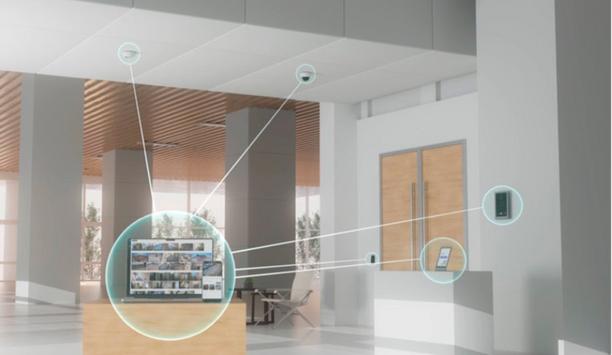
5 ways to strengthen physical security with an integrated system
Download
The benefits of Edge AI + Cloud for security systems
Download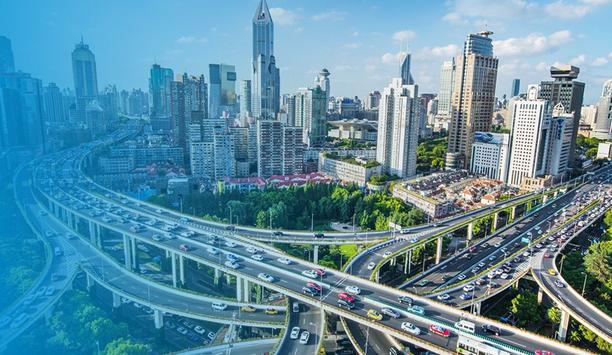
Video technology: making cities safer & improving lives
Download
Assessing the total cost of ownership (TCO) of VMS and NVR systems
Download
Securing unmanned infrastructure at the network edge
Download
Empowering cameras with AI
Download
The rise of ethical facial recognition
Download
Are you ready for an on-site emergency?
Download
VSS - Top 4 questions to get you started
Download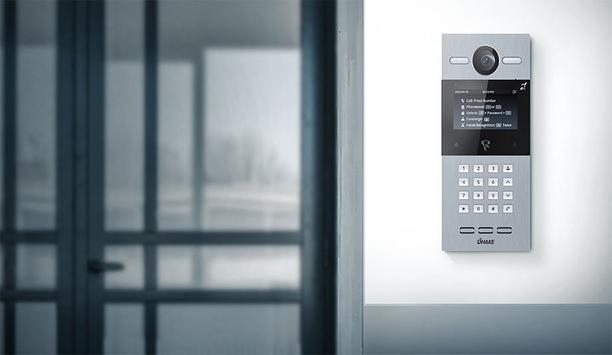
A step-by-step checklist for choosing an intercom system
Download
Healthcare Surveillance: Finding efficiencies from OR to ER and beyond
Download
Safeguard Students With New Techniques And Technology
Download
Assessing safety readiness for education campuses
Download
5 question check-up: Test your camera's cybersecurity
Download
The future of healthcare security is connectivity
Download
5 ways to strengthen physical security with an integrated system
Download
The benefits of Edge AI + Cloud for security systems
Download
Video technology: making cities safer & improving lives
Download
Assessing the total cost of ownership (TCO) of VMS and NVR systems
Download
Securing unmanned infrastructure at the network edge
Download
Empowering cameras with AI
Download
The rise of ethical facial recognition
Download
Are you ready for an on-site emergency?
Download
VSS - Top 4 questions to get you started
Download
A step-by-step checklist for choosing an intercom system
Download
Healthcare Surveillance: Finding efficiencies from OR to ER and beyond
Download
Safeguard Students With New Techniques And Technology
Download
Assessing safety readiness for education campuses
Download
5 question check-up: Test your camera's cybersecurity
Download
The future of healthcare security is connectivity
Download

Videos
Security camera systems: Manufacturers & Suppliers
- Hikvision Security camera systems
- Dahua Technology Security camera systems
- Hanwha Vision Security camera systems
- Vicon Security camera systems
- Bosch Security camera systems
- BCDVideo Security camera systems
- LILIN Security camera systems
- Verkada Security camera systems
- Axis Communications Security camera systems
- Videotec Security camera systems
- Seagate Security camera systems
- VIVOTEK Security camera systems
- AV Costar Security camera systems
- Avigilon Security camera systems
- MOBOTIX Security camera systems
- Milesight Security camera systems
- Vanderbilt Security camera systems
- OT Systems Security camera systems
- Bolide Security camera systems
- Messoa Security camera systems

The ultimate guide to mastering key control
Download
Using artificial intelligence (AI) to automate physical security systems
Download
A modern guide to data loss prevention
Download
7 proven solutions for law enforcement key control and asset management
Download
The truth behind 9 mobile access myths
Download








